Pasaquan, Buena Vista, Georgia, 2023
Unstuck in Time: St. EOM, Pasaquan, Here, Now
Pasaquan and The Bo Bartlett Center
September 15-December 16, 2023
Participating Artists:
Ryan Akers, David Onri Anderson, Merrilee Challiss, Julia Elsas, Erik Frydenborg, Leia Genis, Sonya Yong James, St. EOM (aka Eddie Owens Martin), Robert Morgan, New Future City Radio (Damon Locks and Rob Mazurek), Sarah Peters, Sonic Mud (Julia Elsas, Kenny Wollesen, Kirk Knuffke, Madeleine Ventrice), Sergio Suarez
Friday, September 15, 2023
The Bo Bartlett Center
Opening Reception and Performance by Sonic Mud
6:00-8:00pm
Saturday, September 16, 2023
Pasaquan, Buena Vista
Premier and Performance of Commissioned Work by New Future City Radio (Damon Locks and Rob Mazurek)
Performance by Sonic Mud
5:03pm-Sunset
Read the review by Rob Rushin-Knopf in Salvation South here.
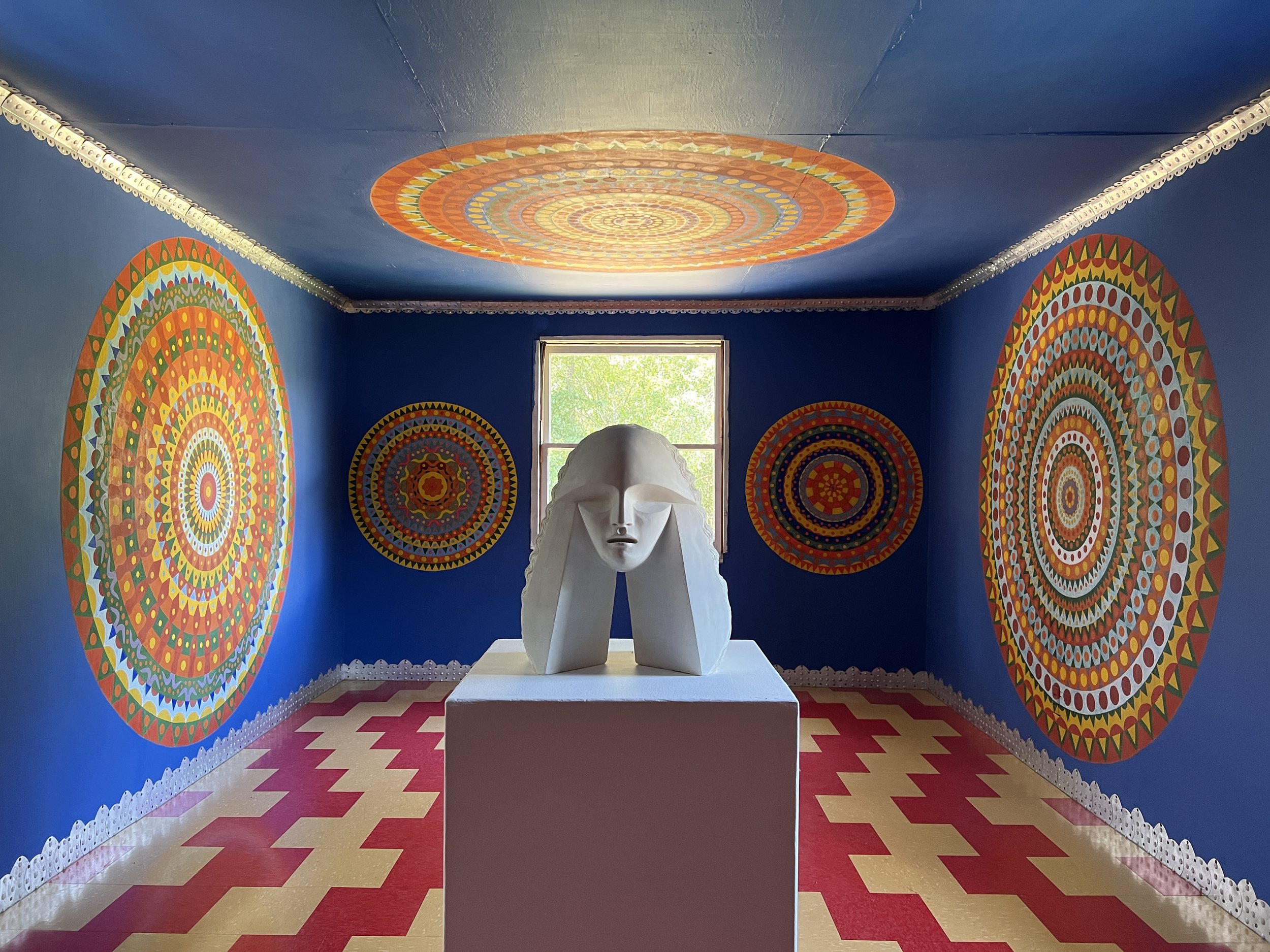


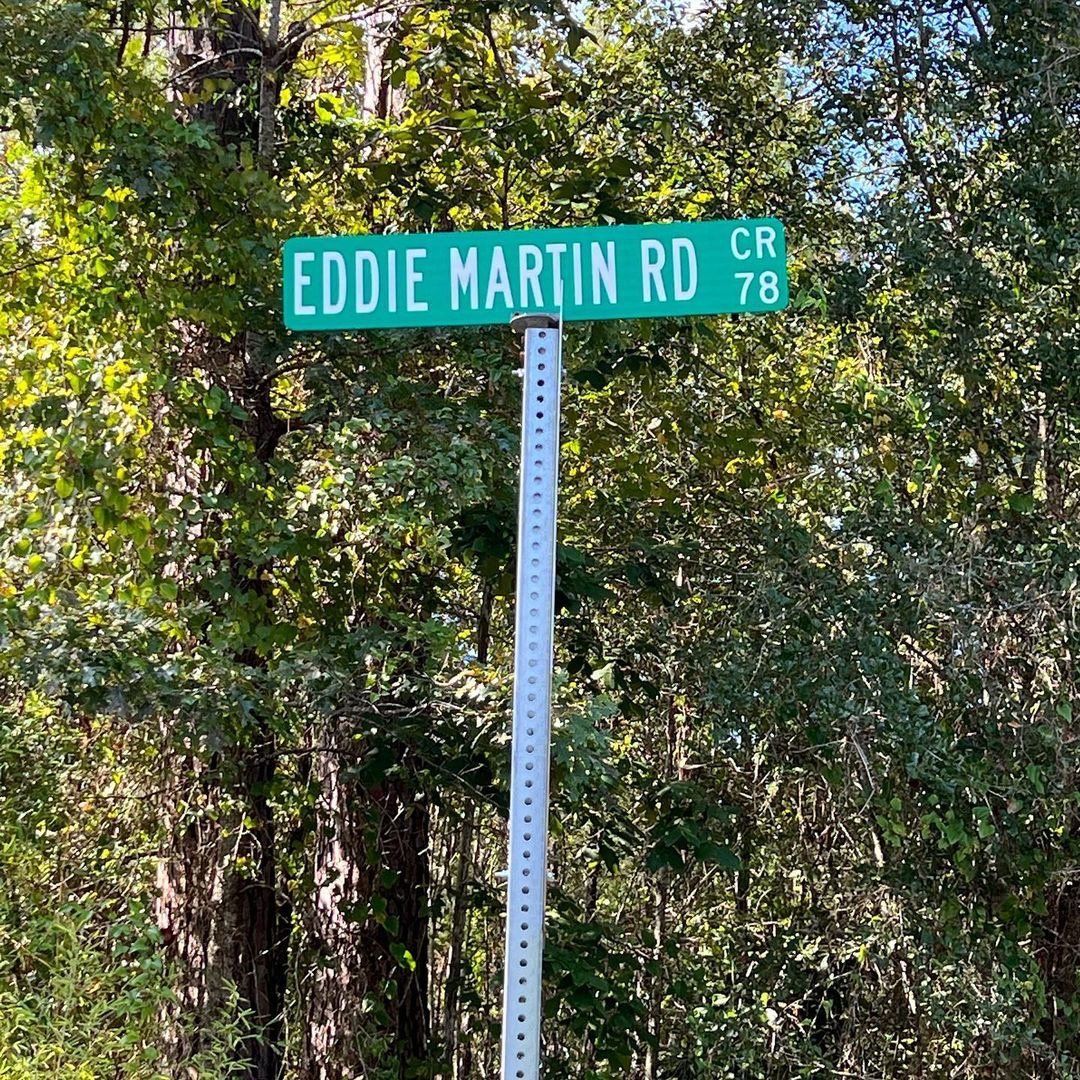

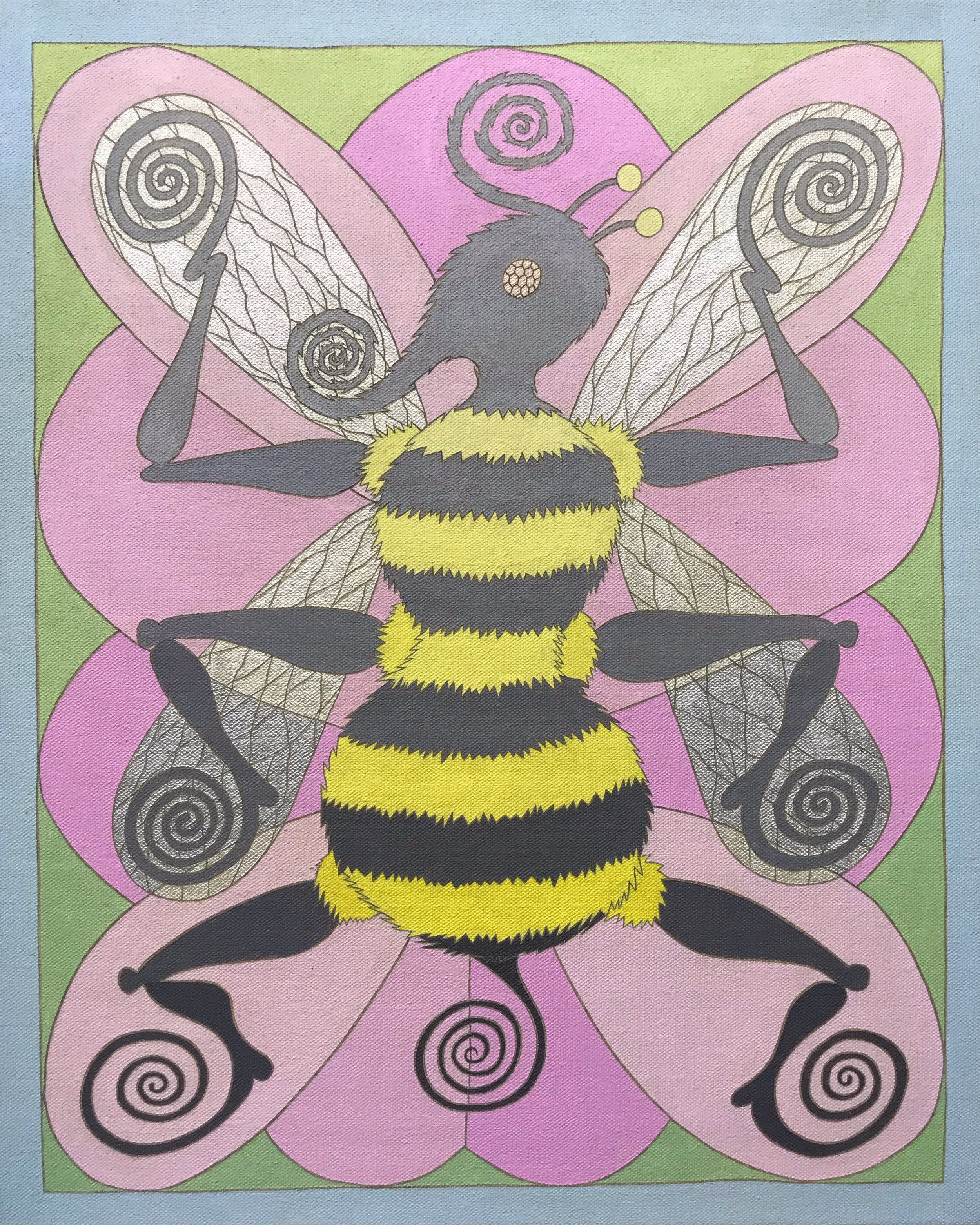
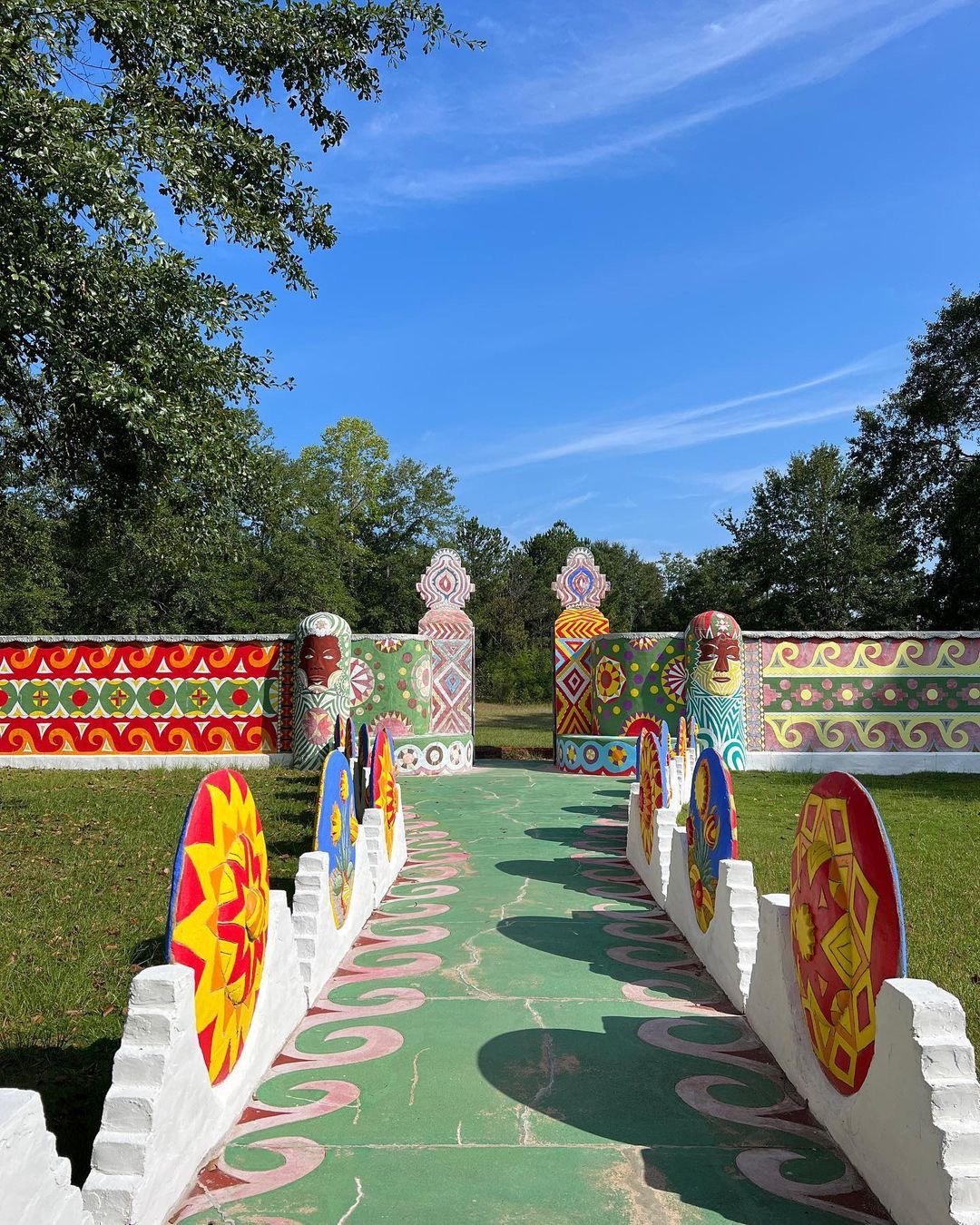



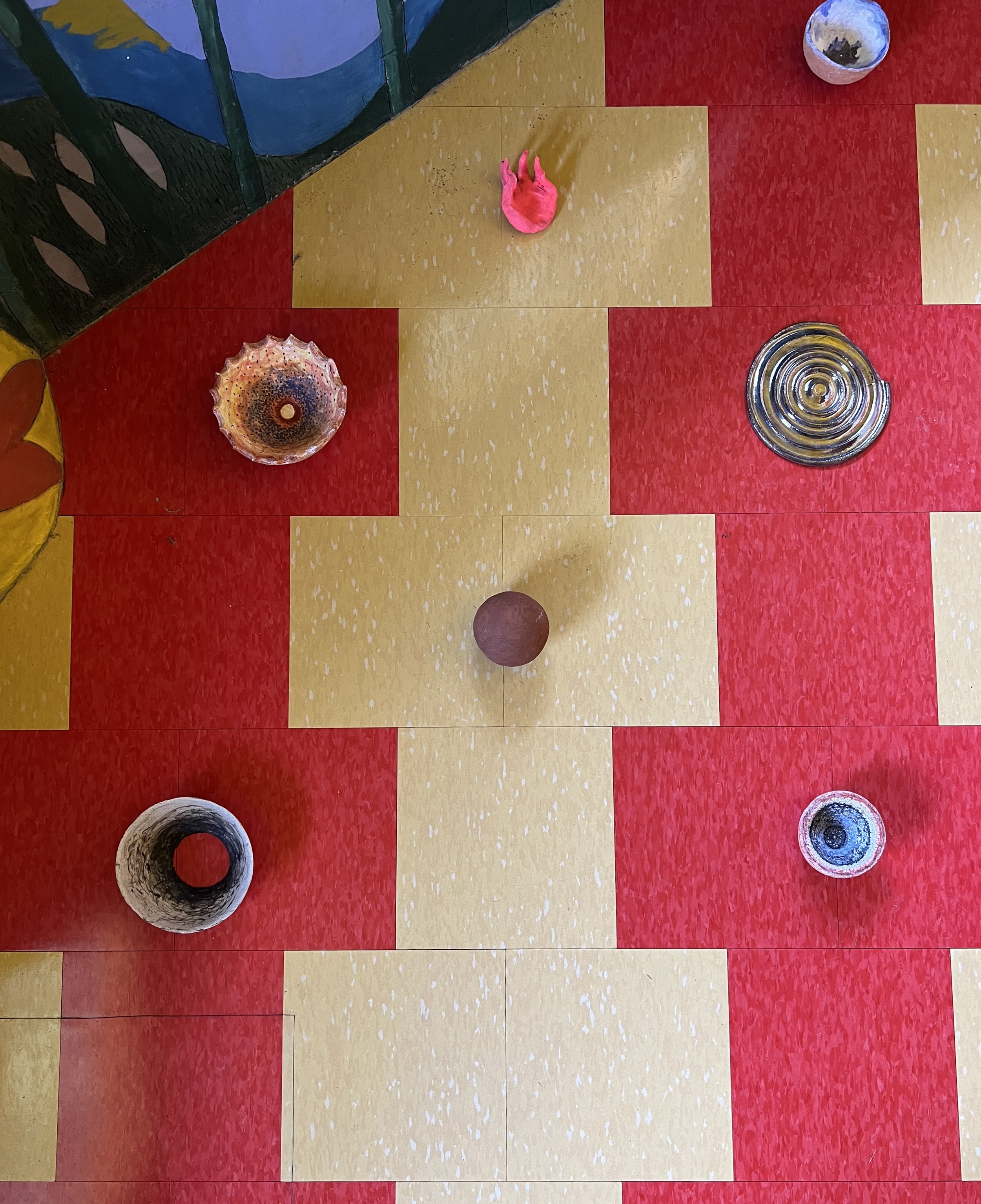
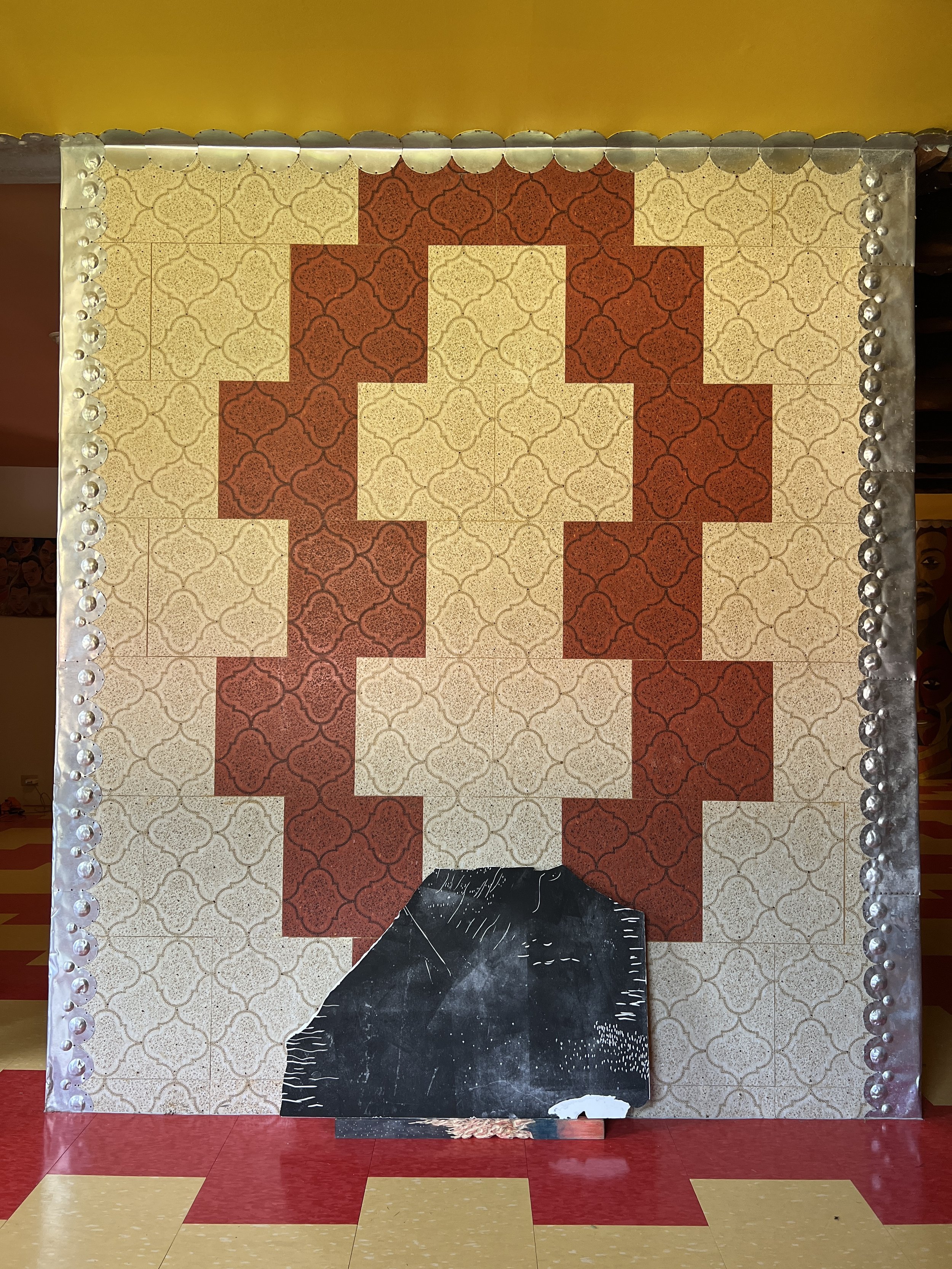
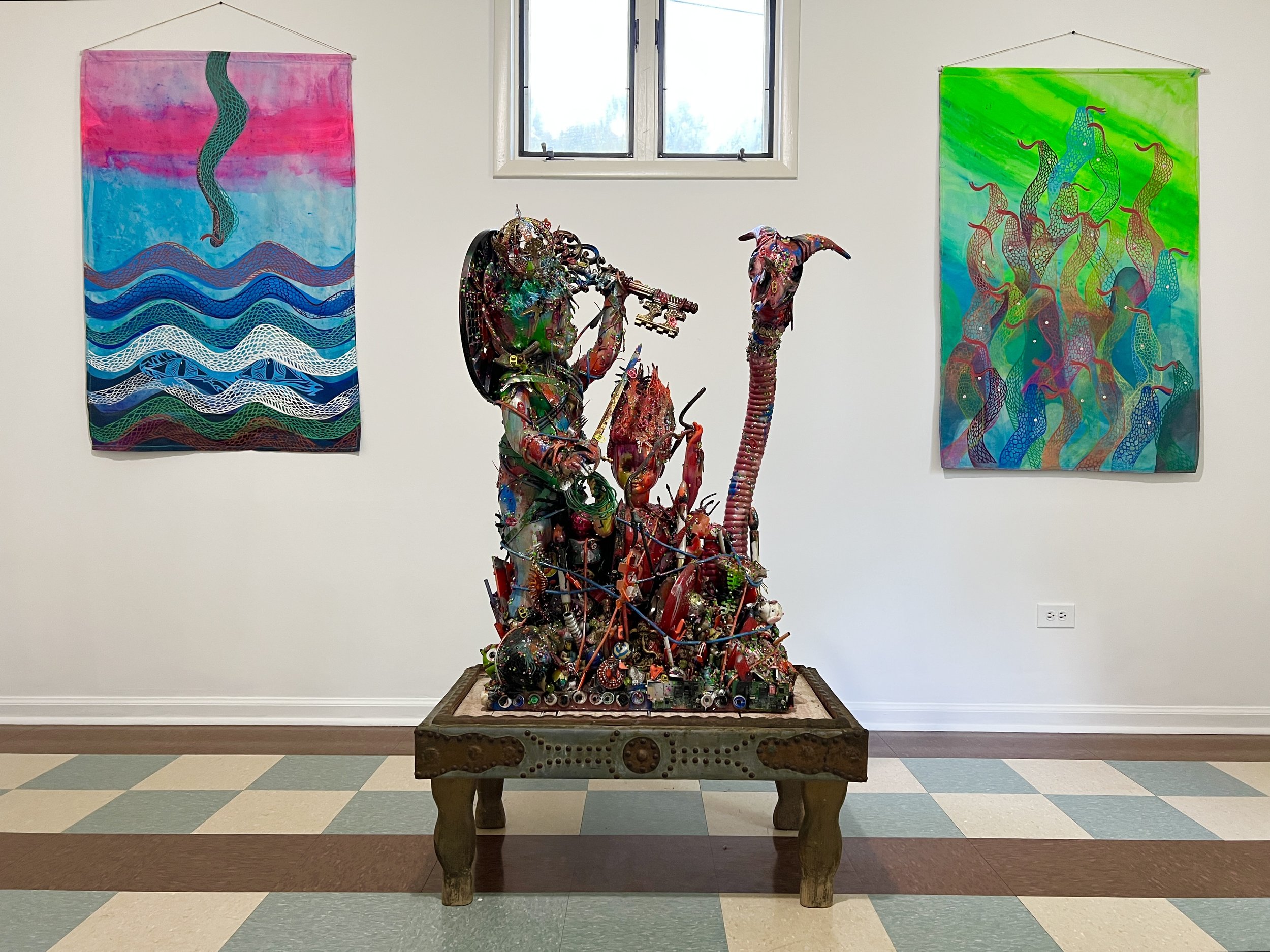
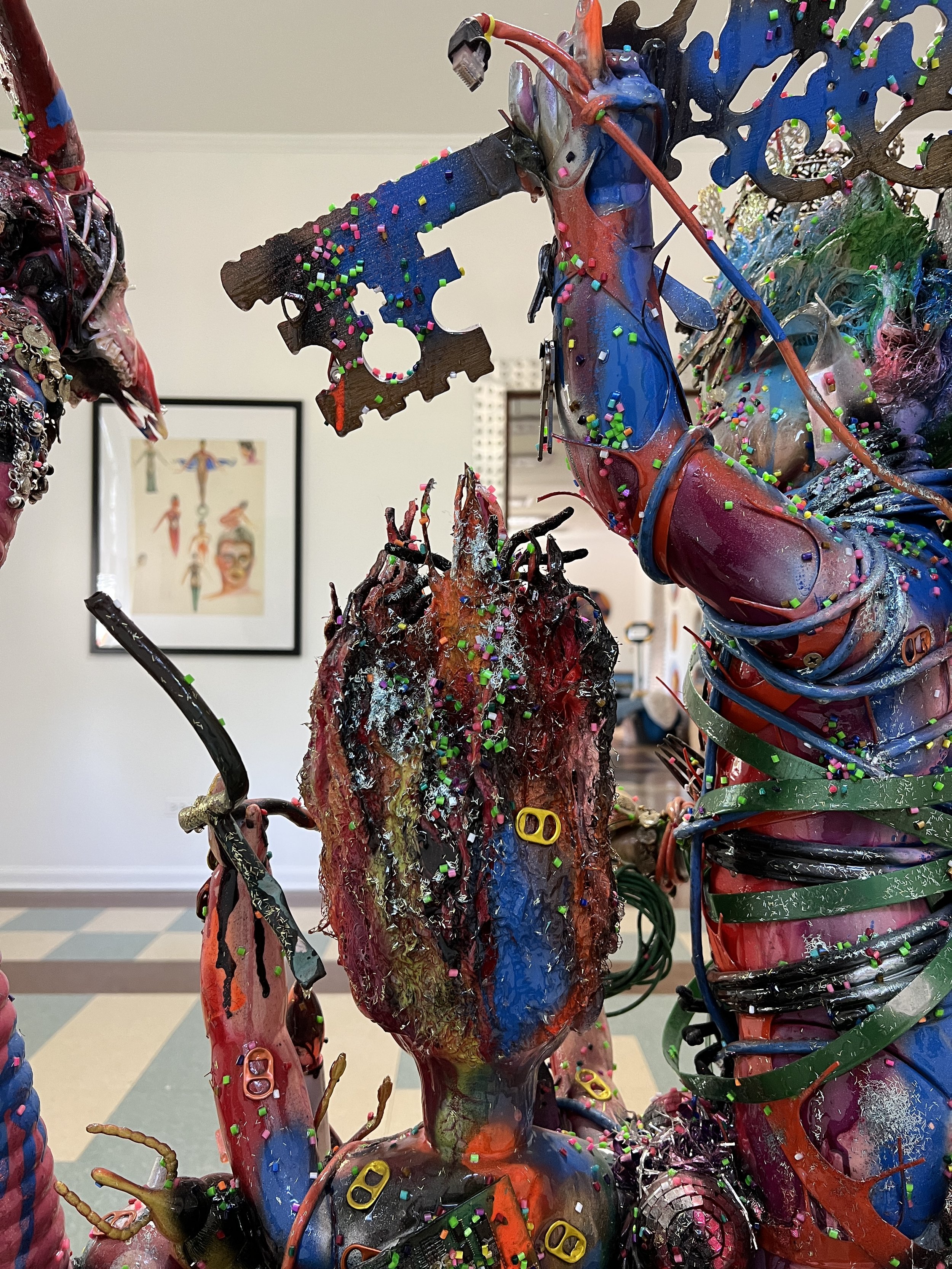
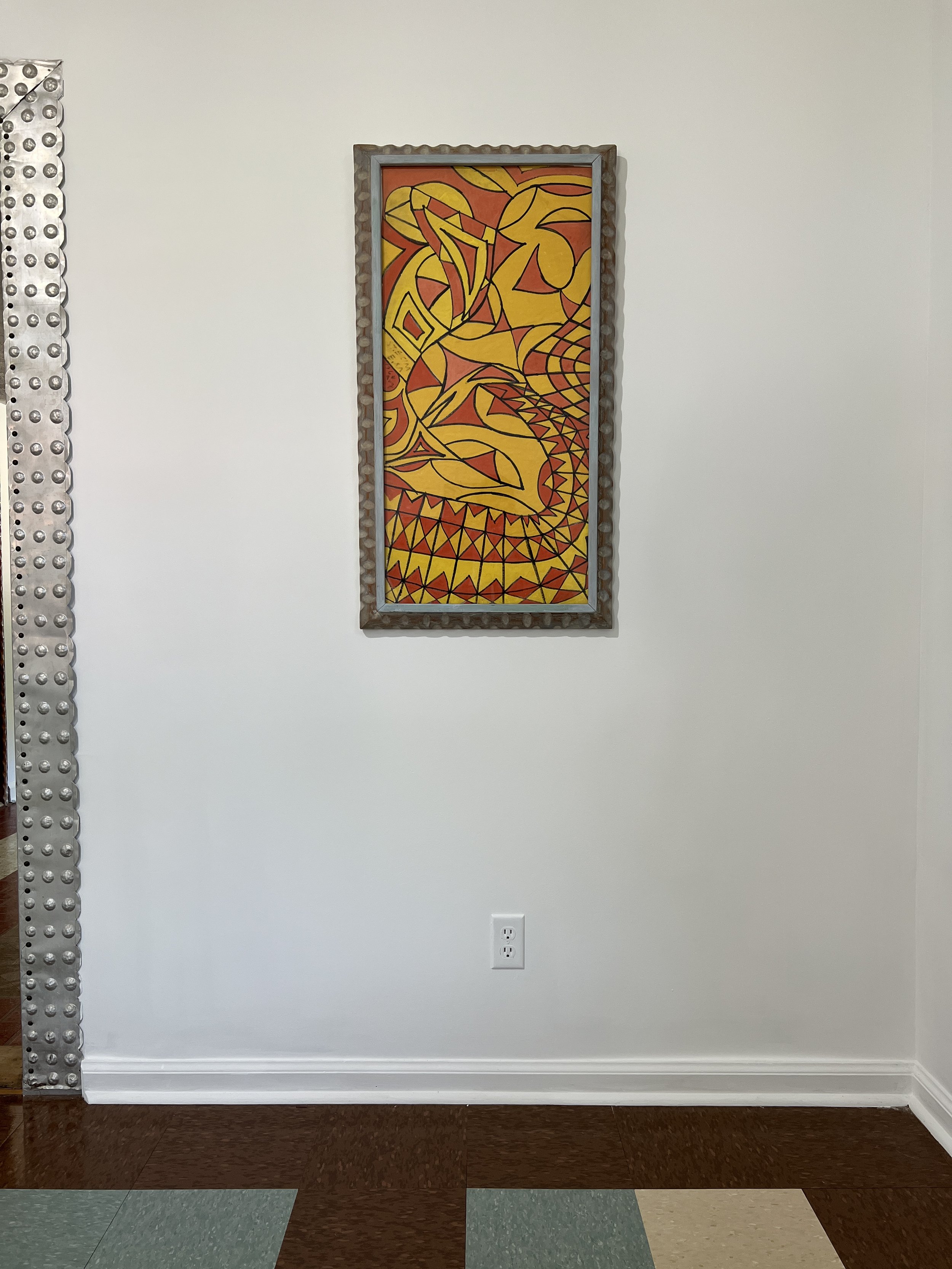
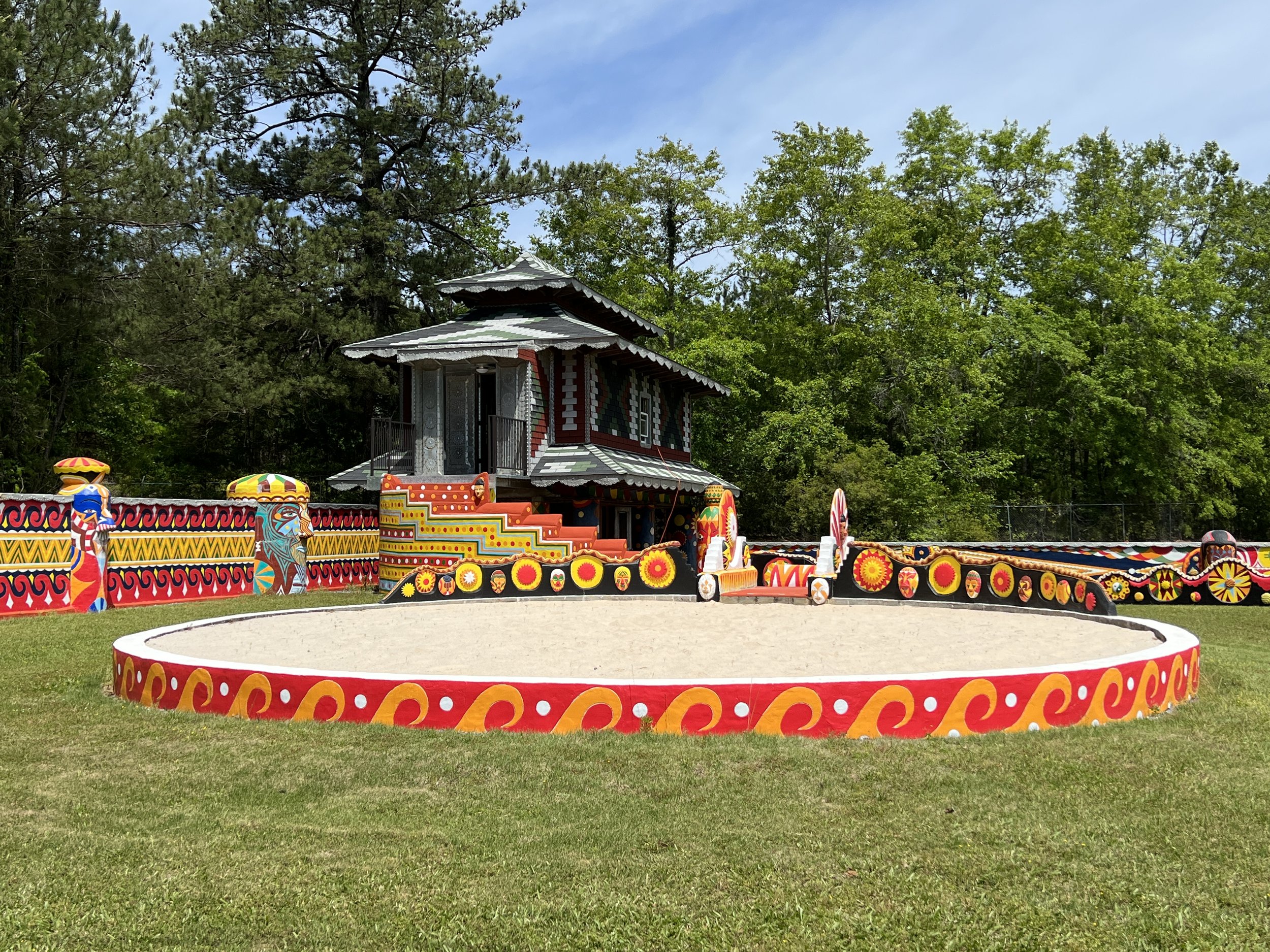
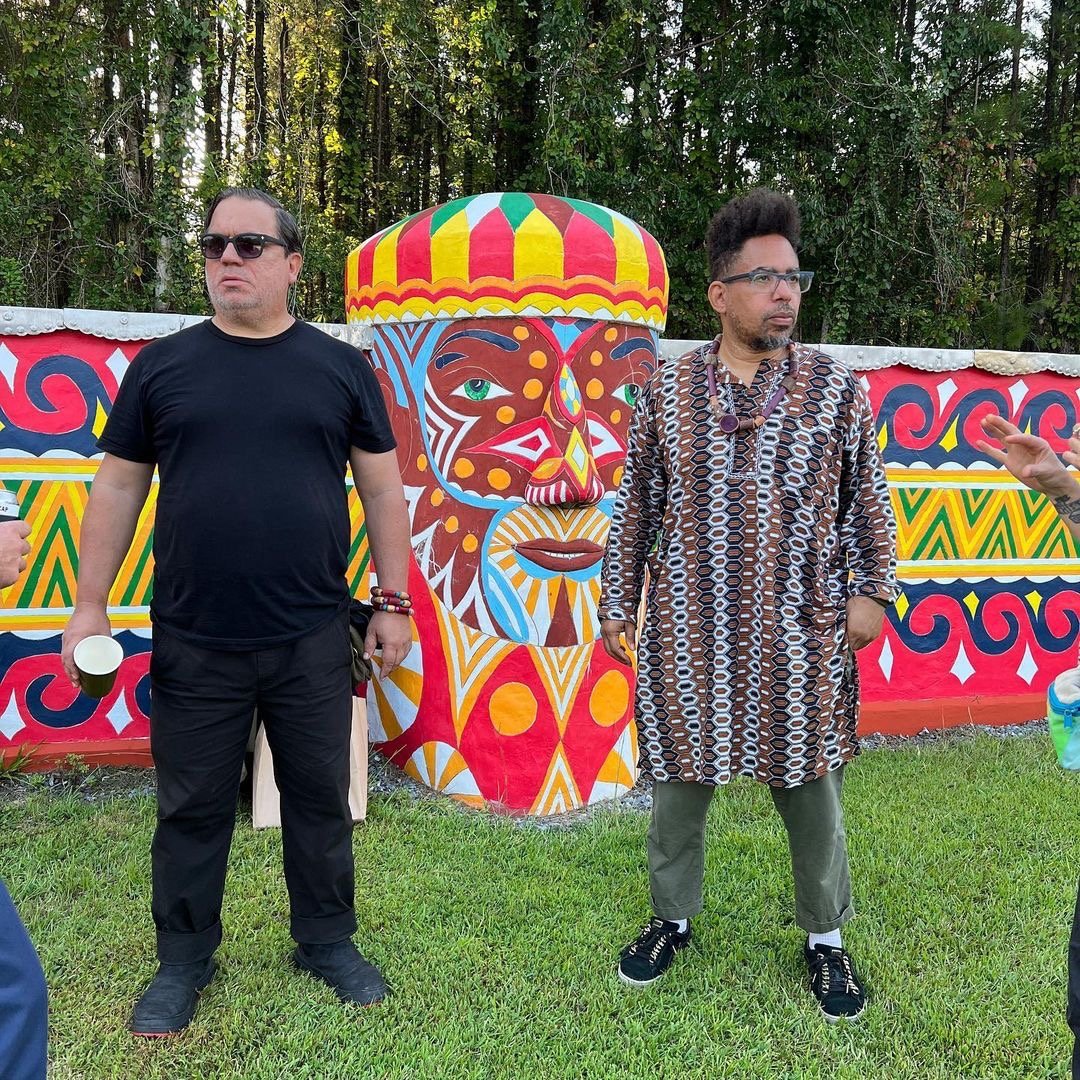

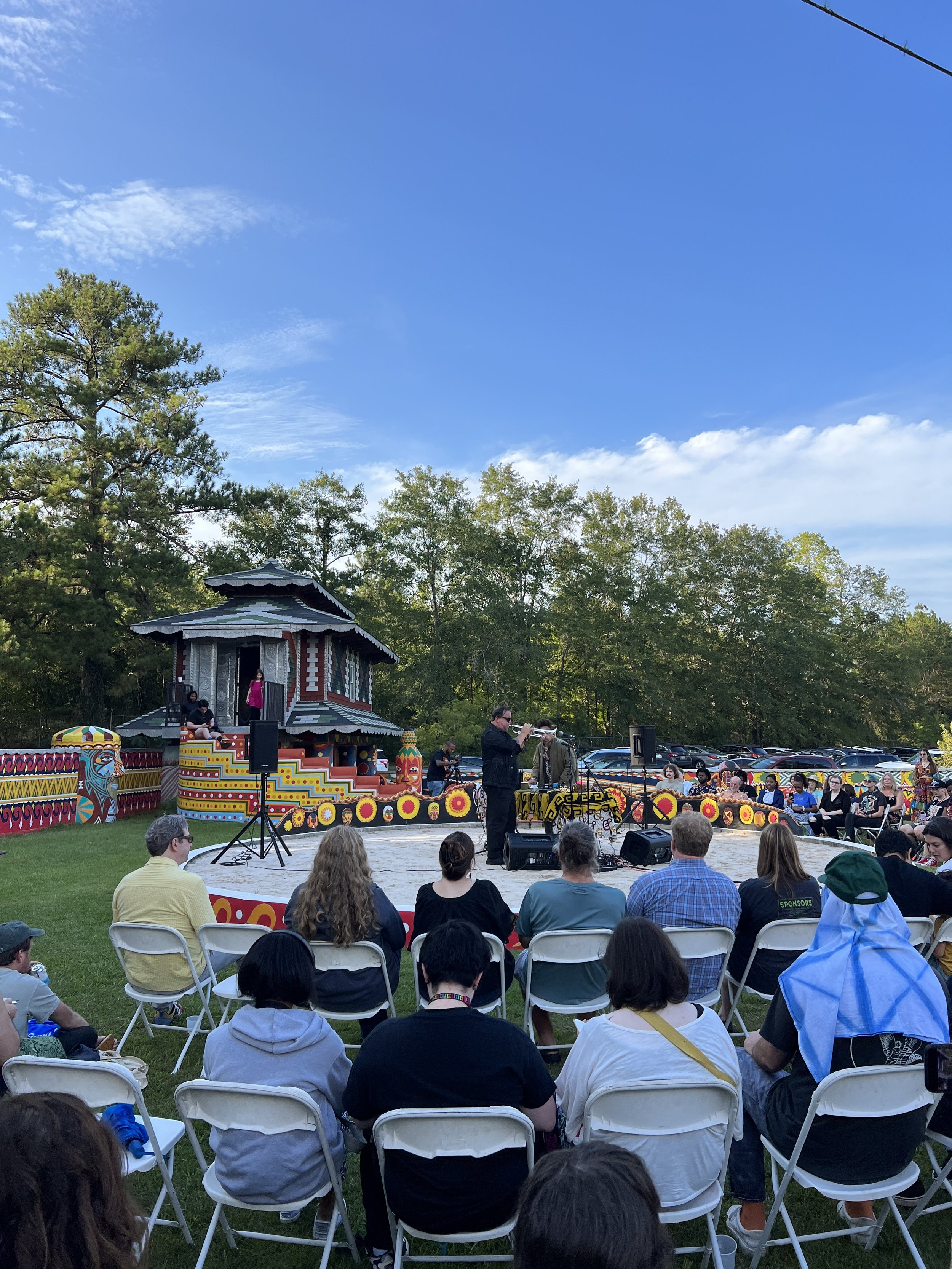

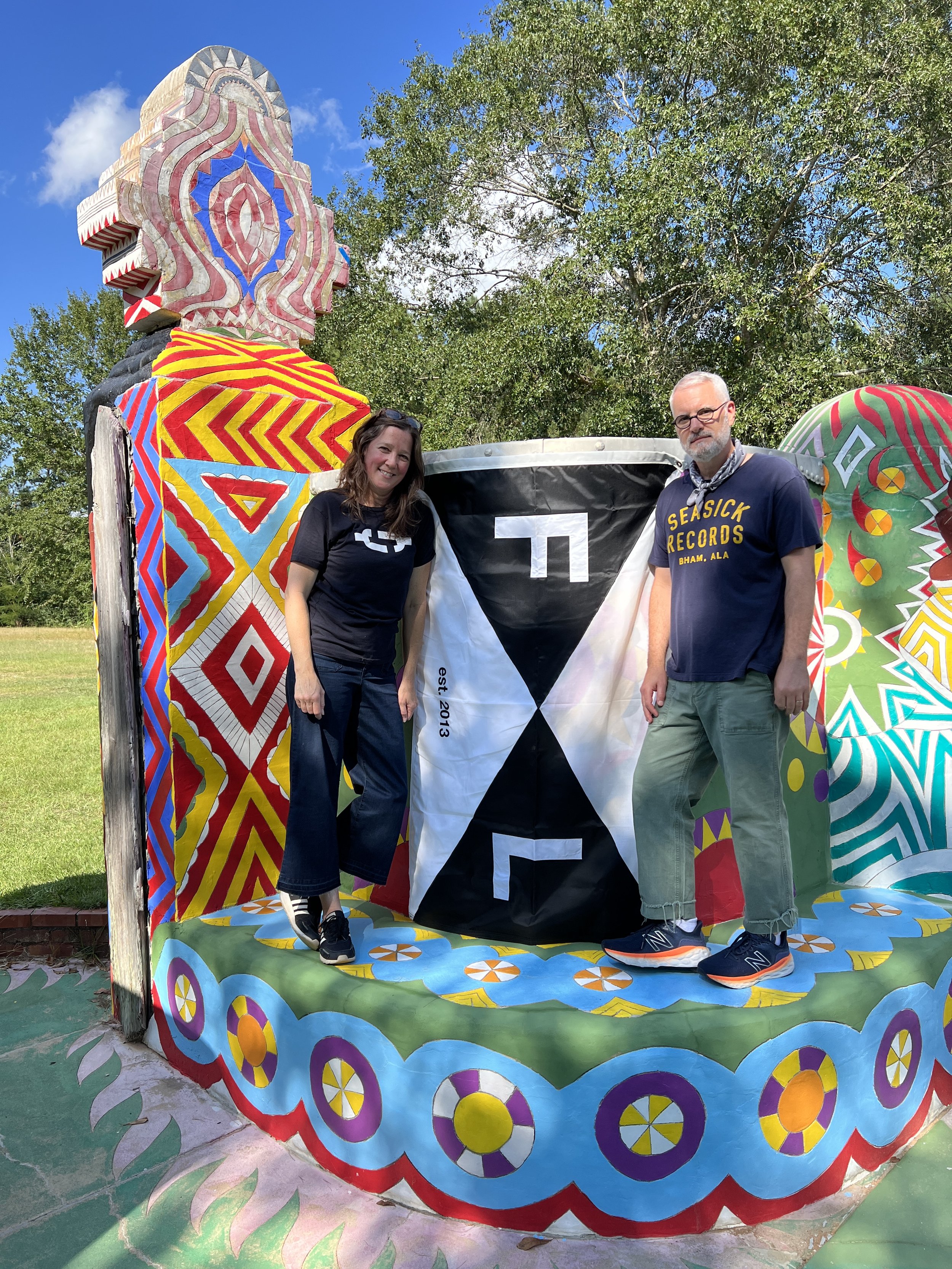
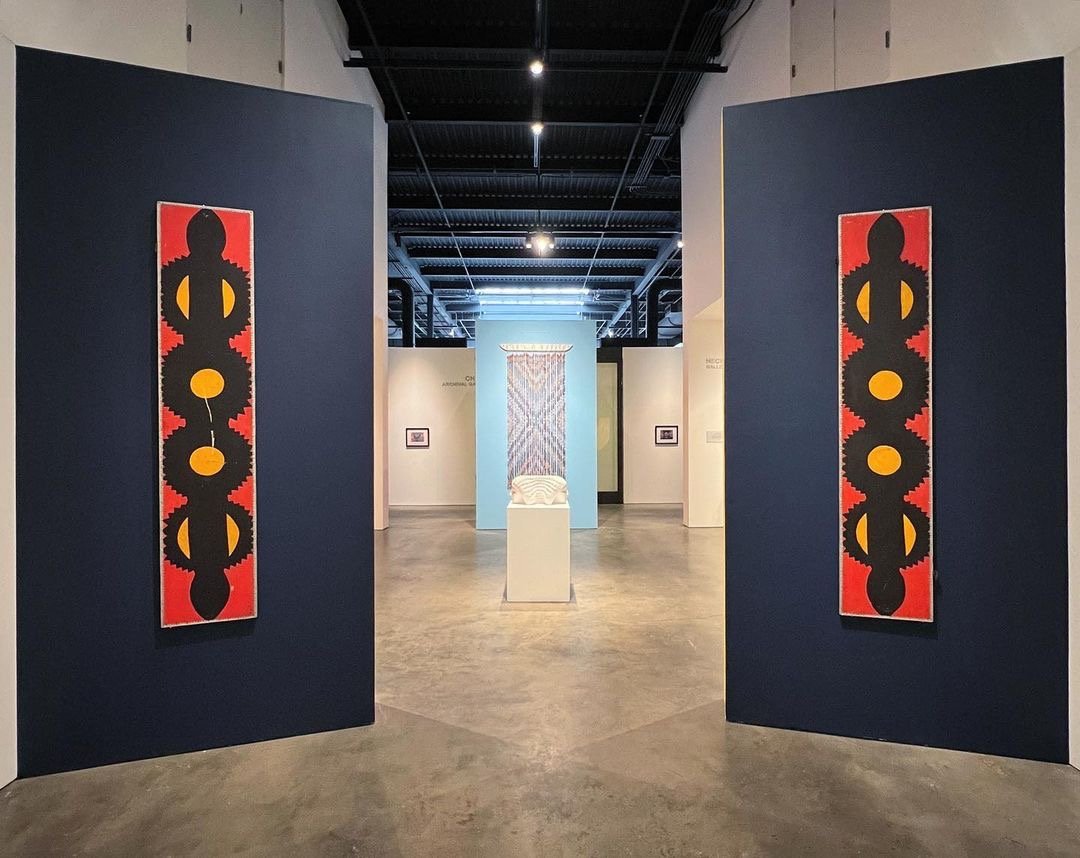
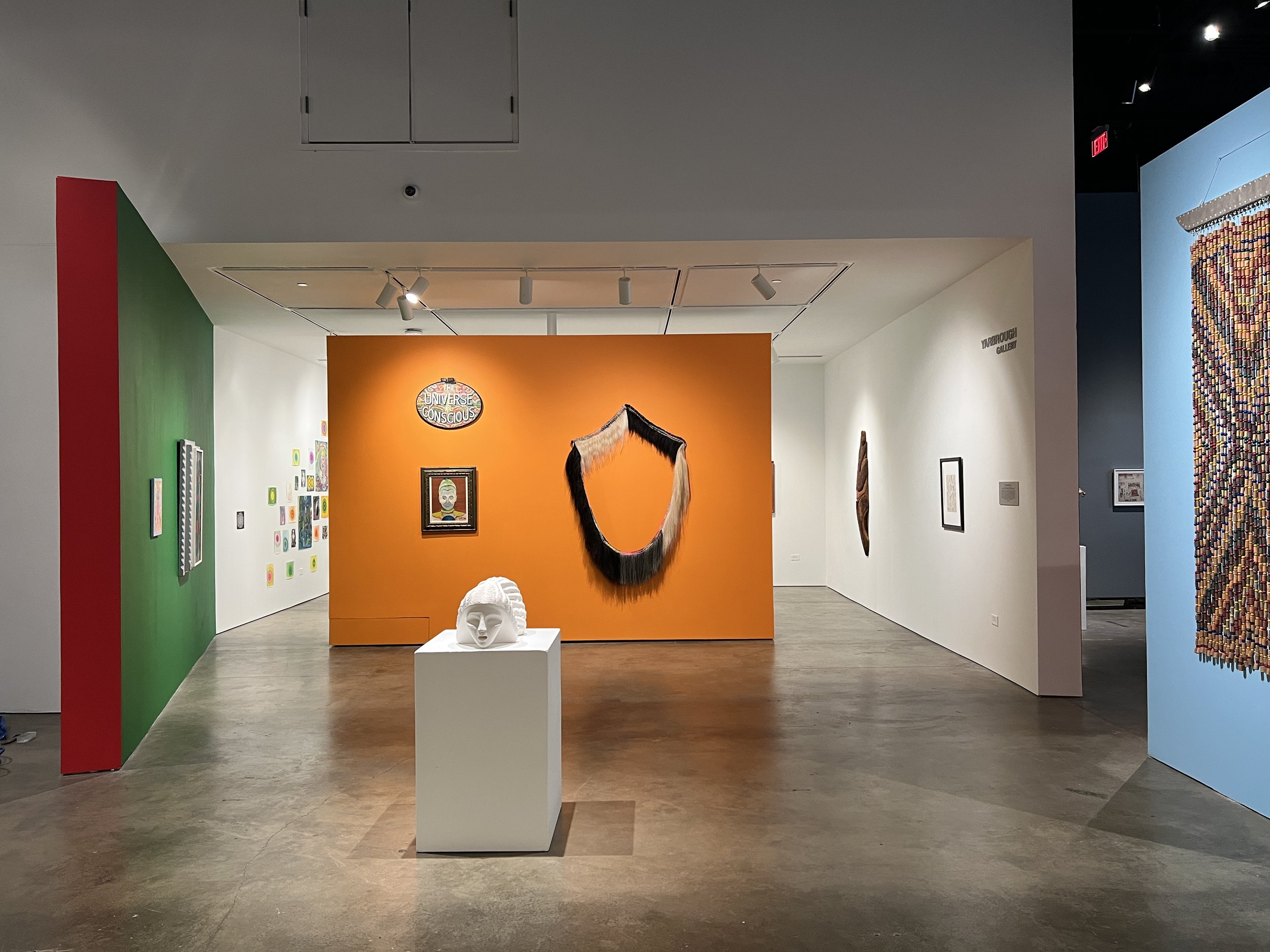
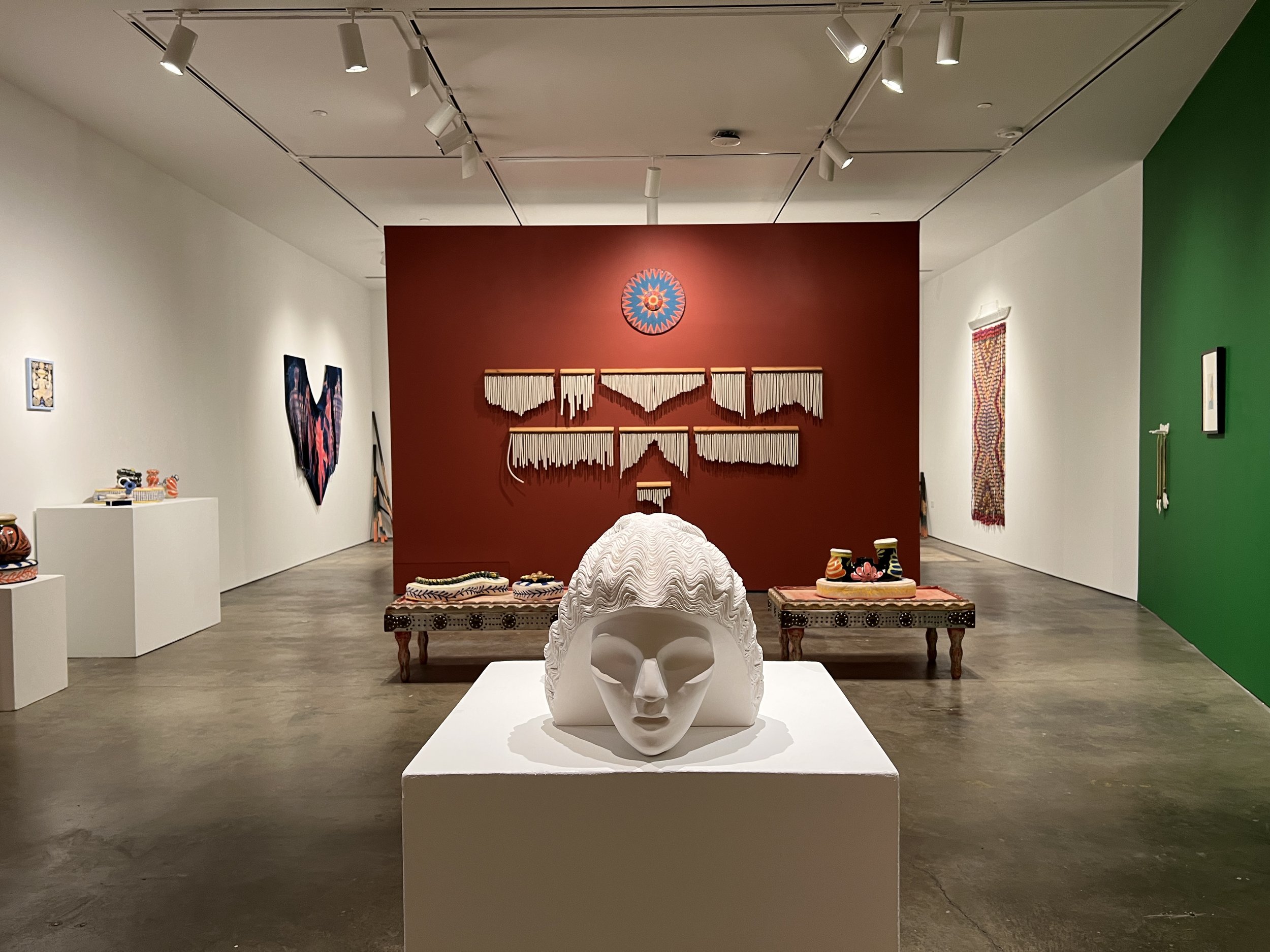
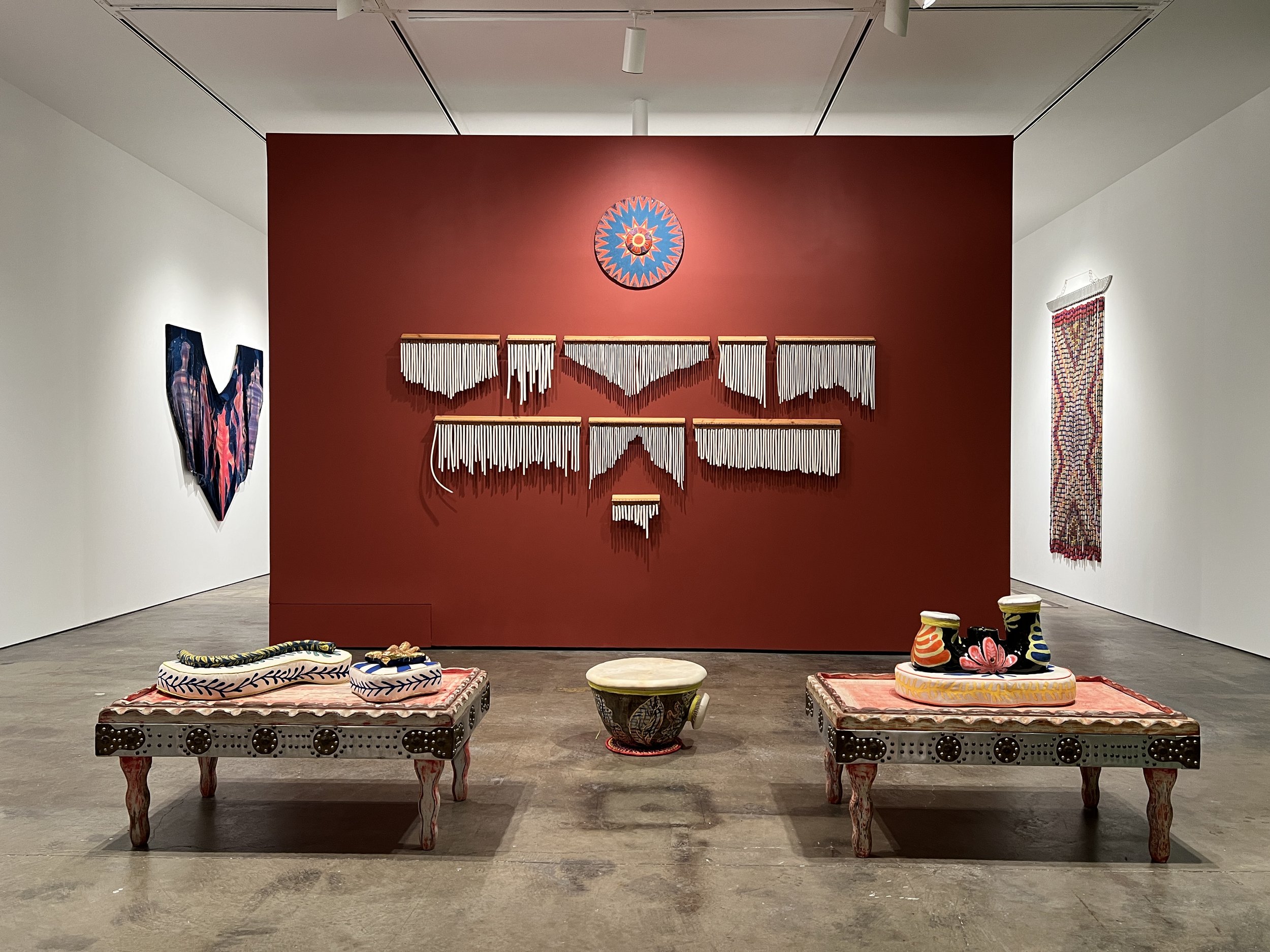
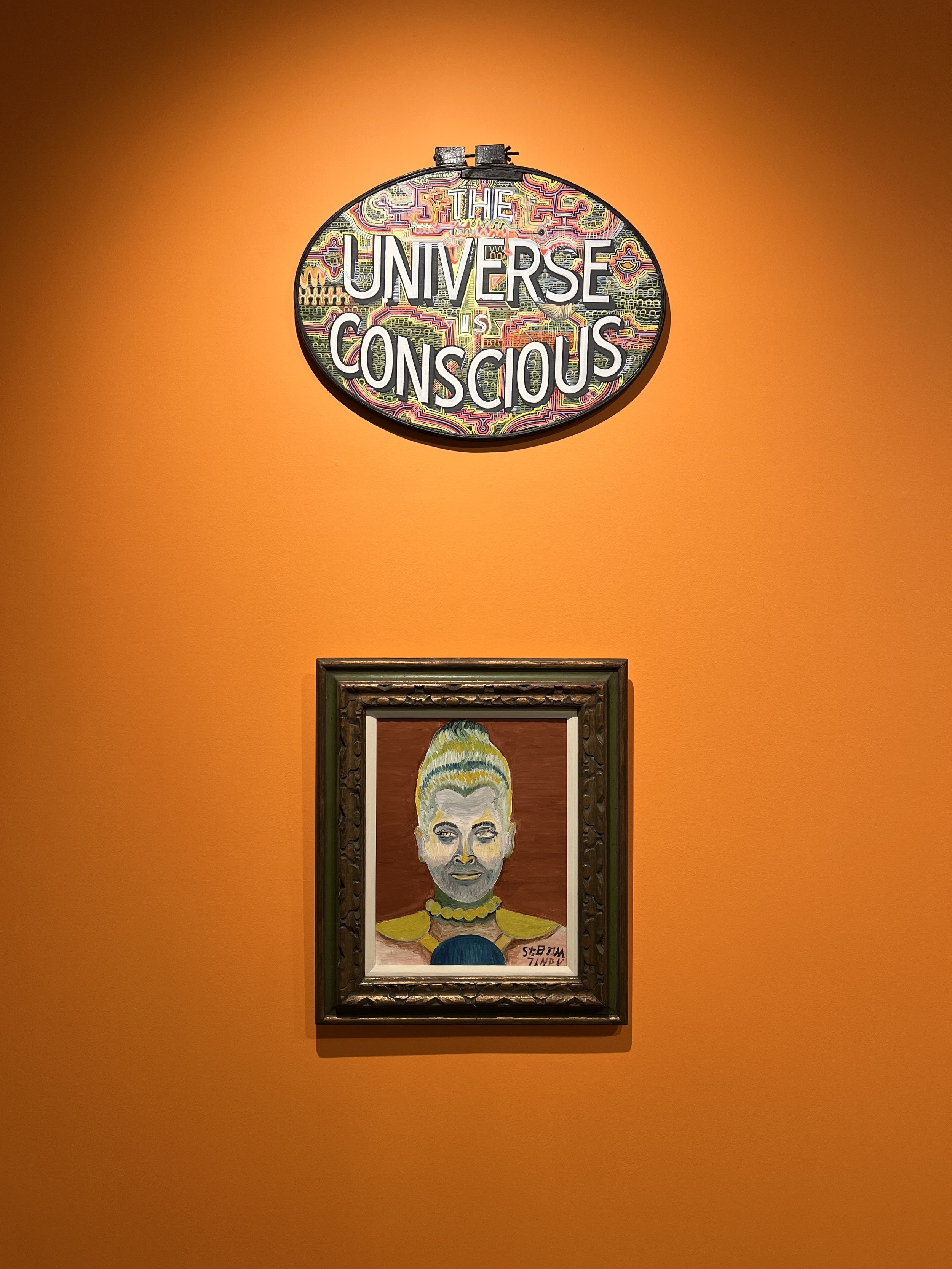
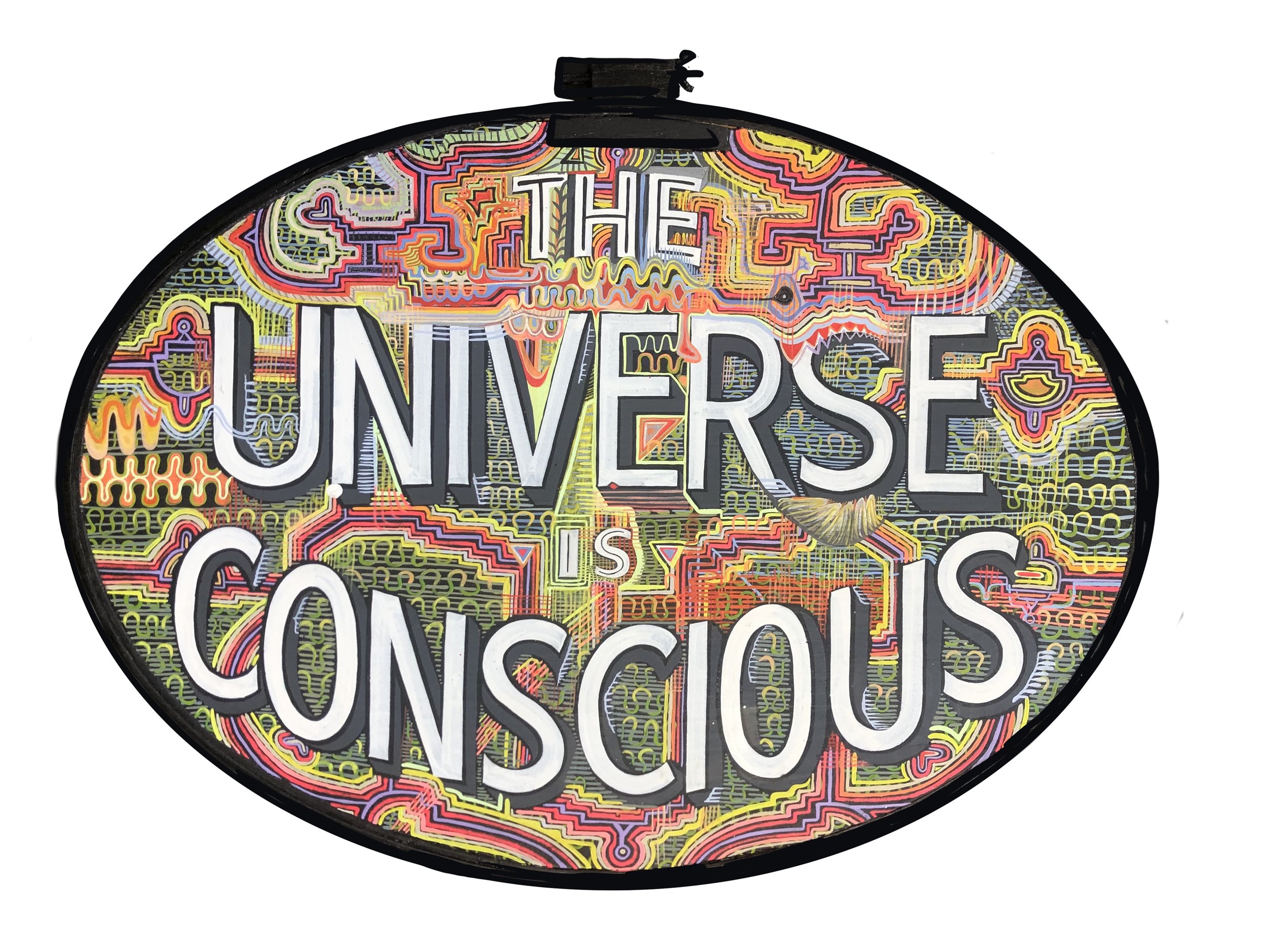

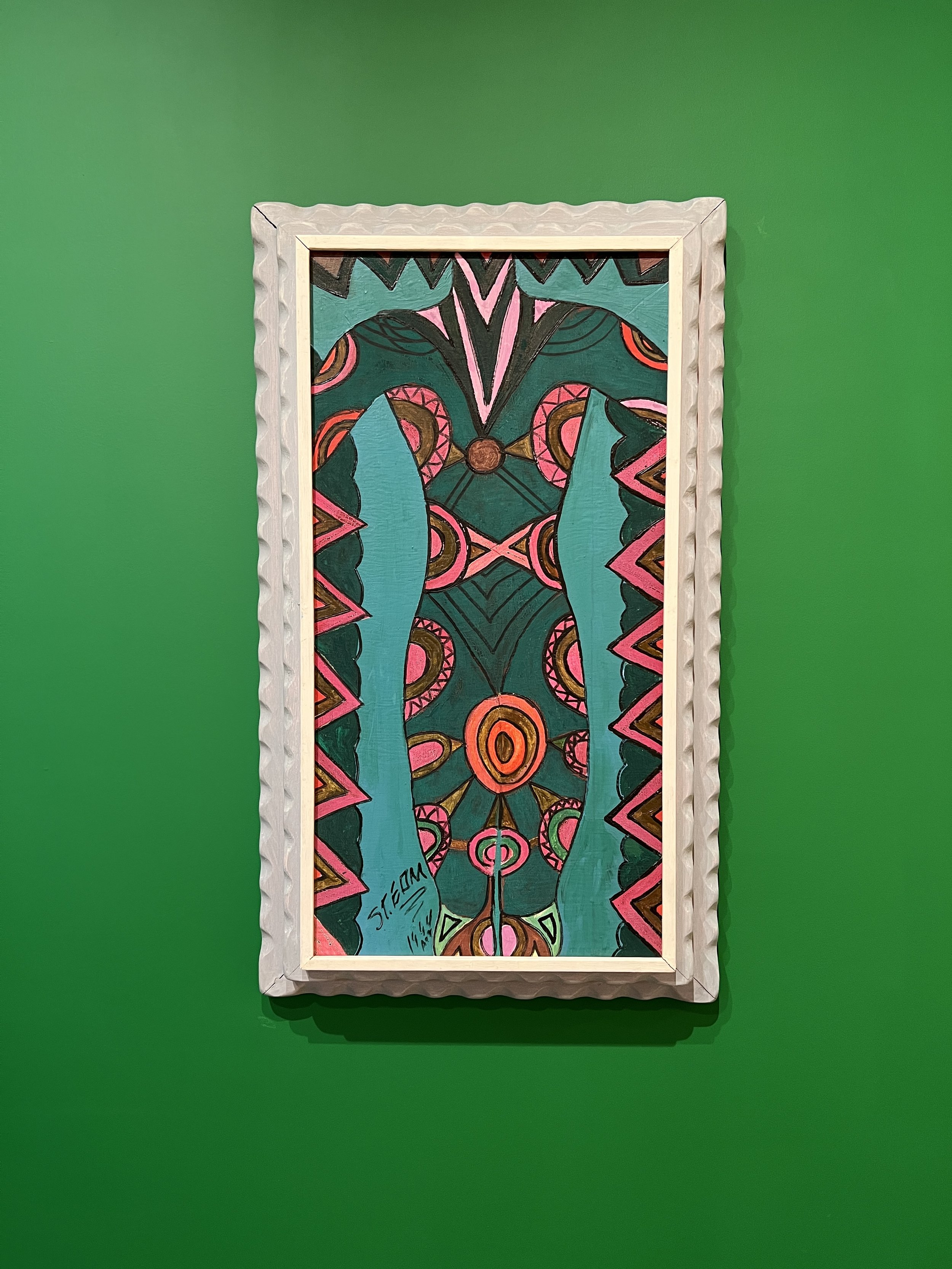
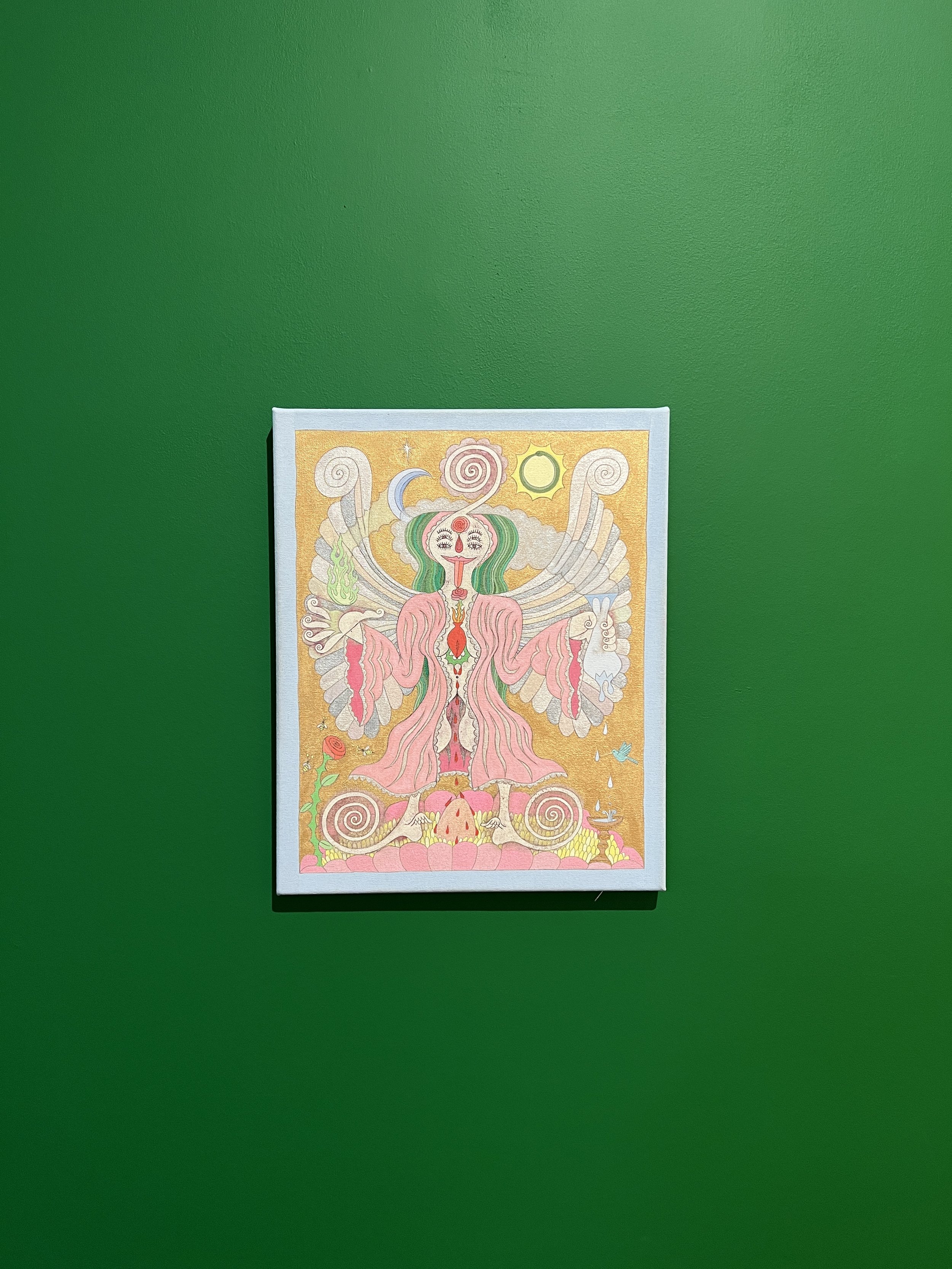

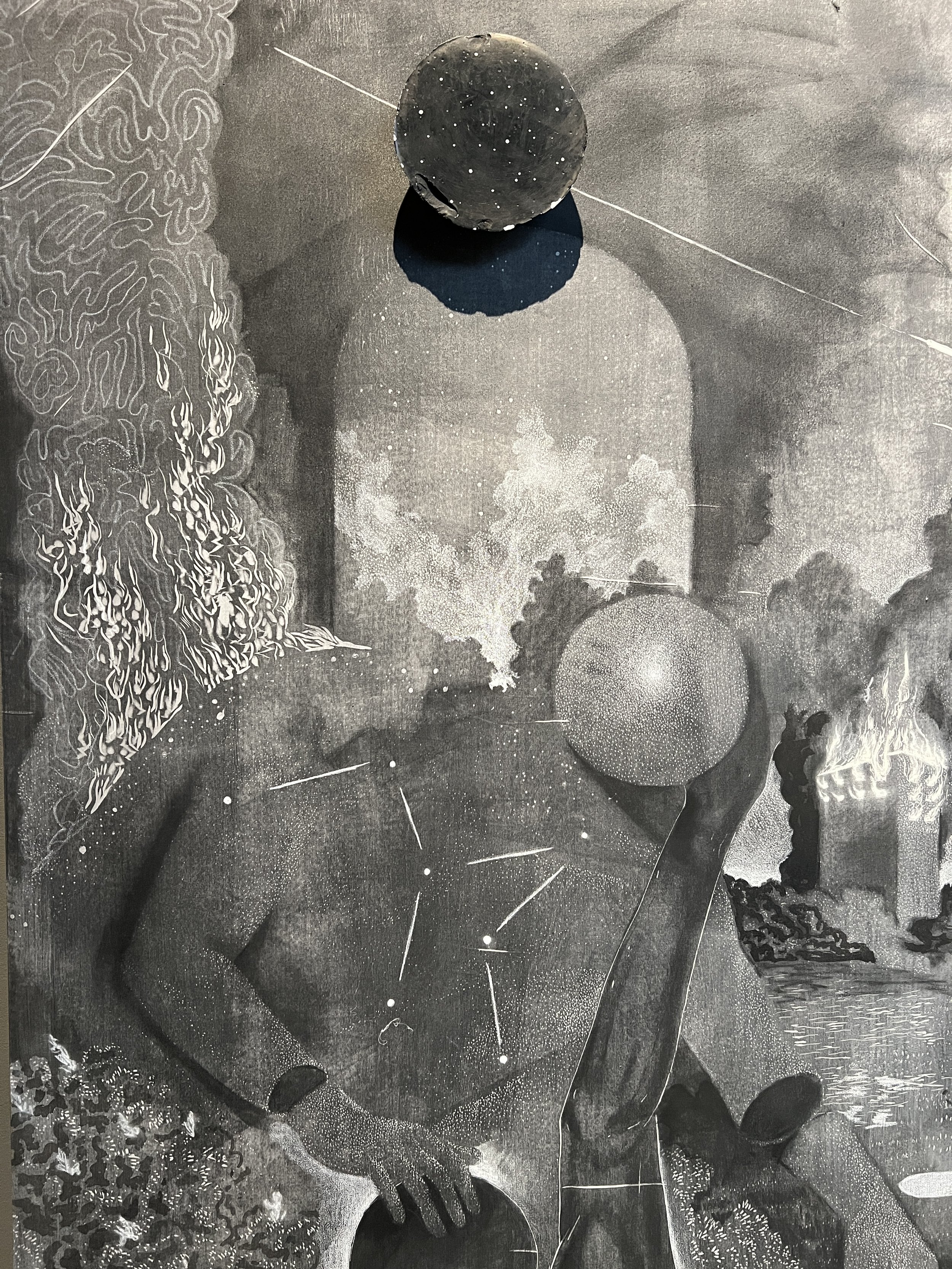


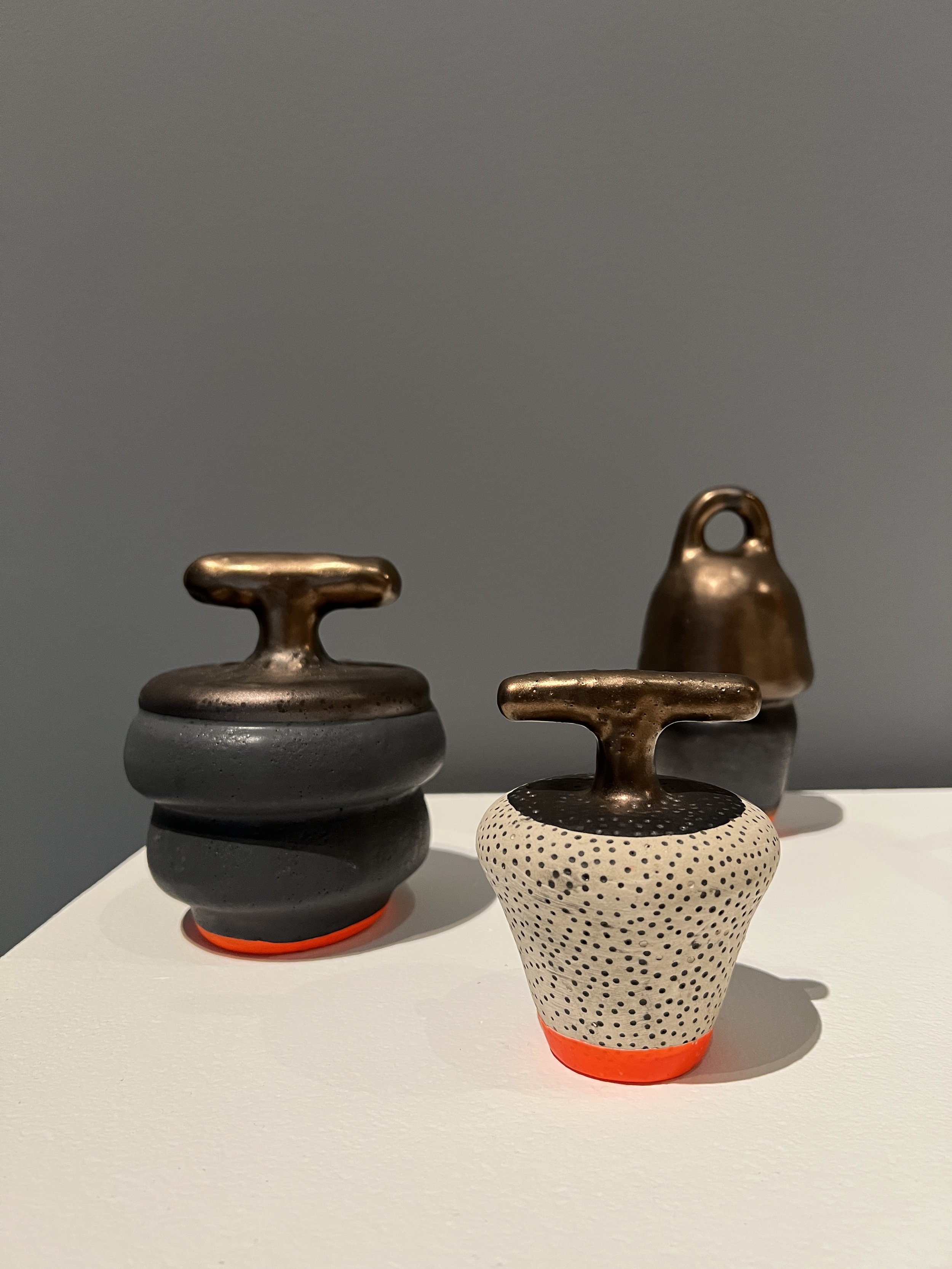

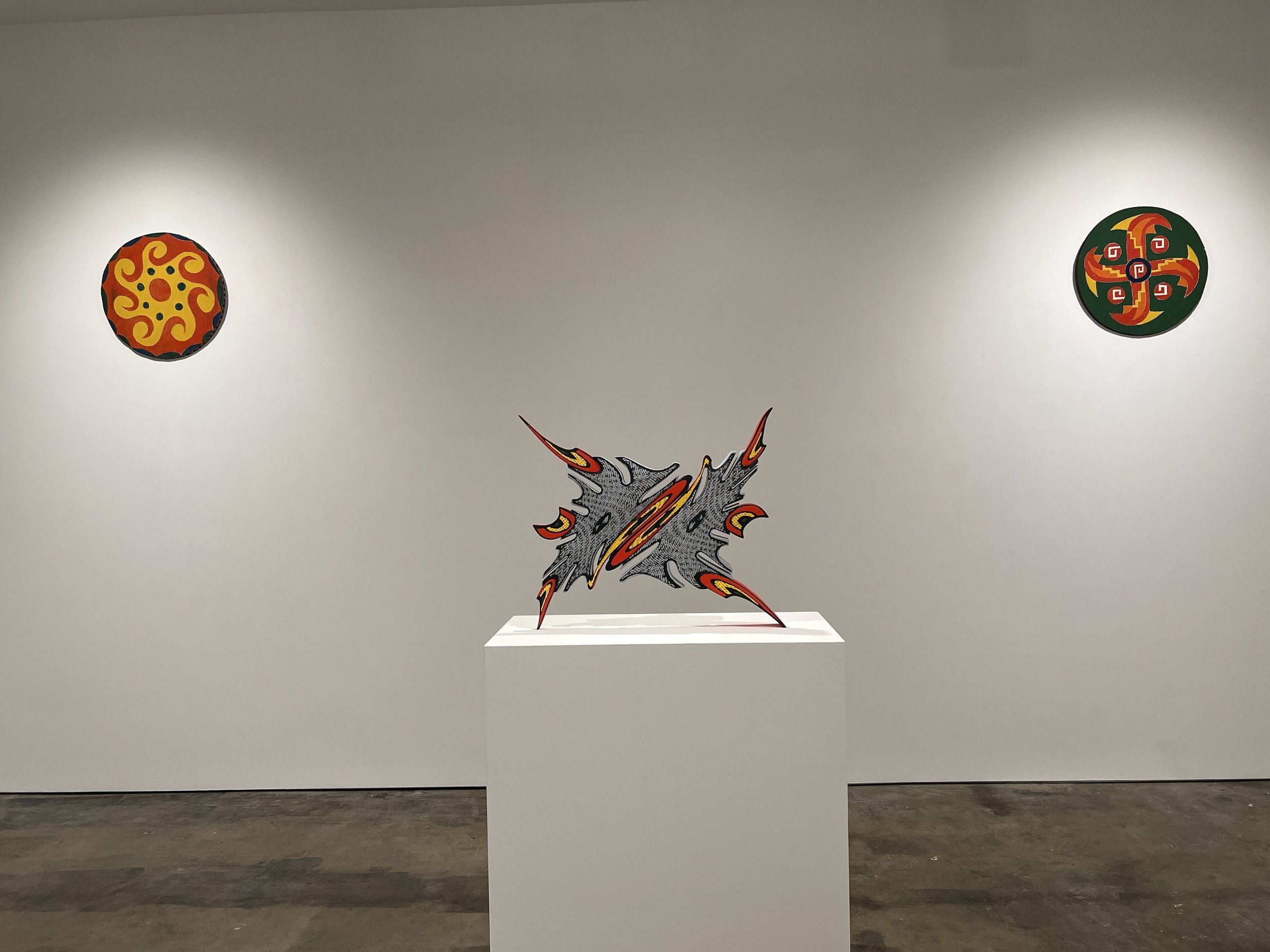
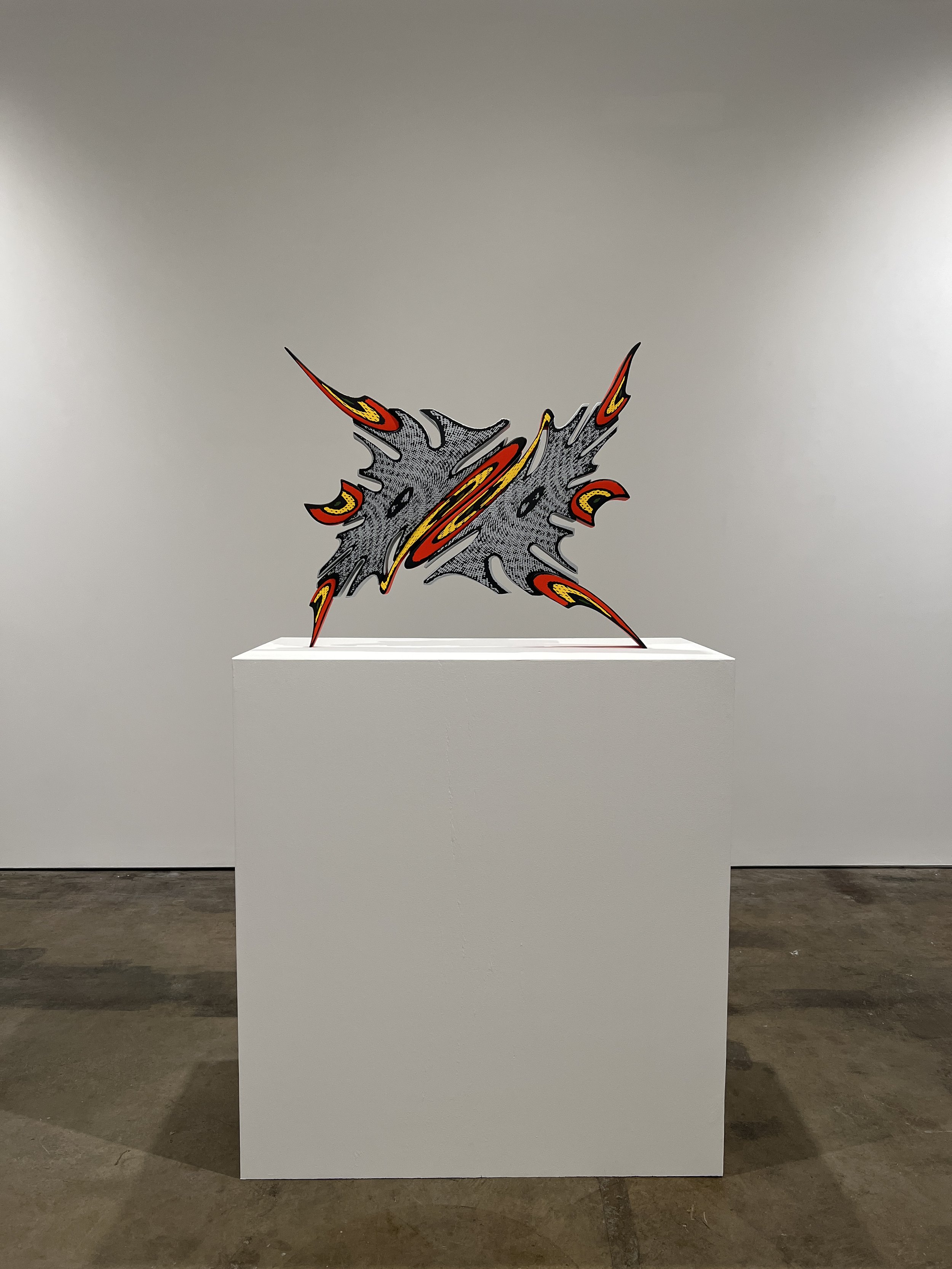
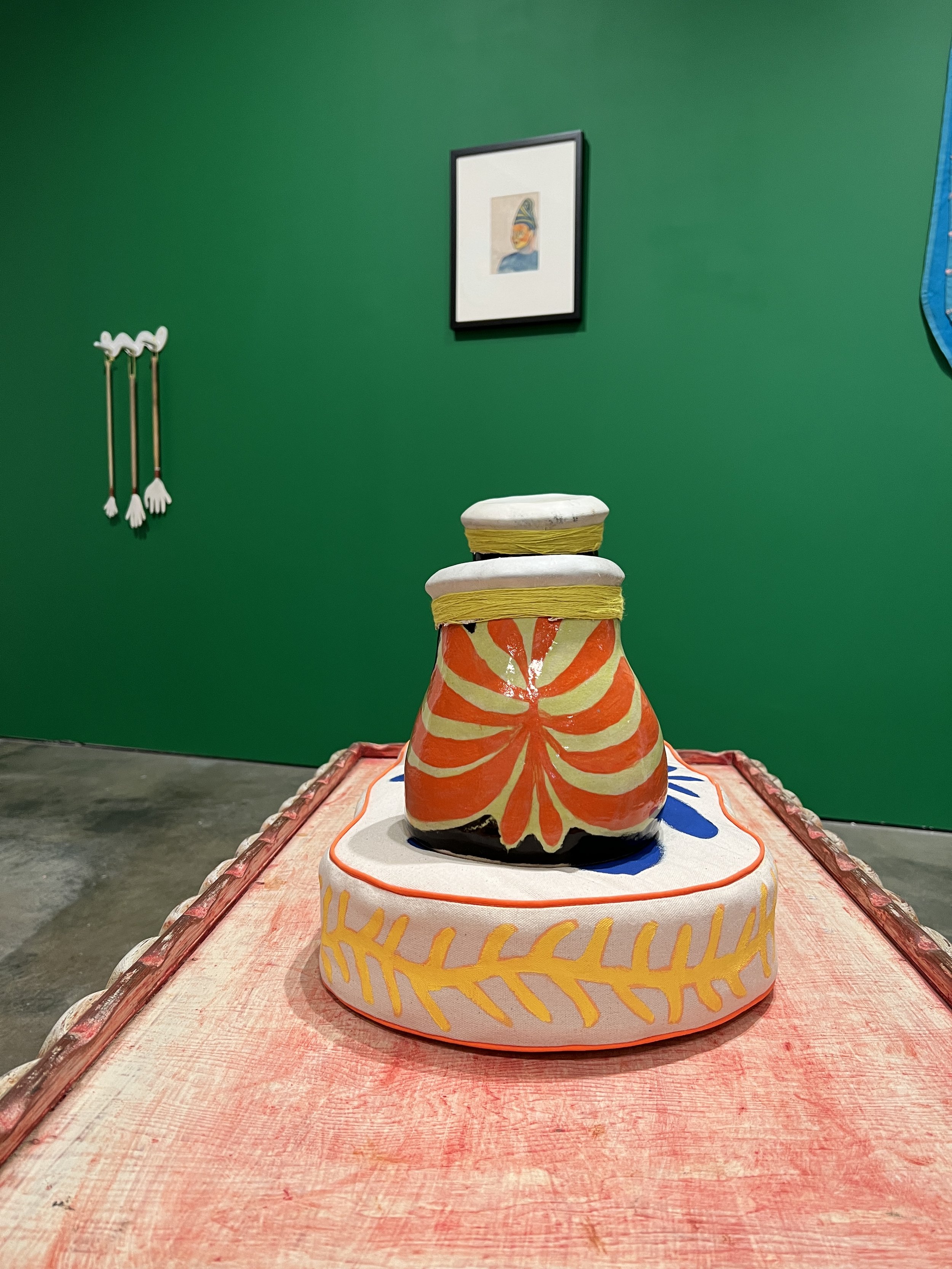
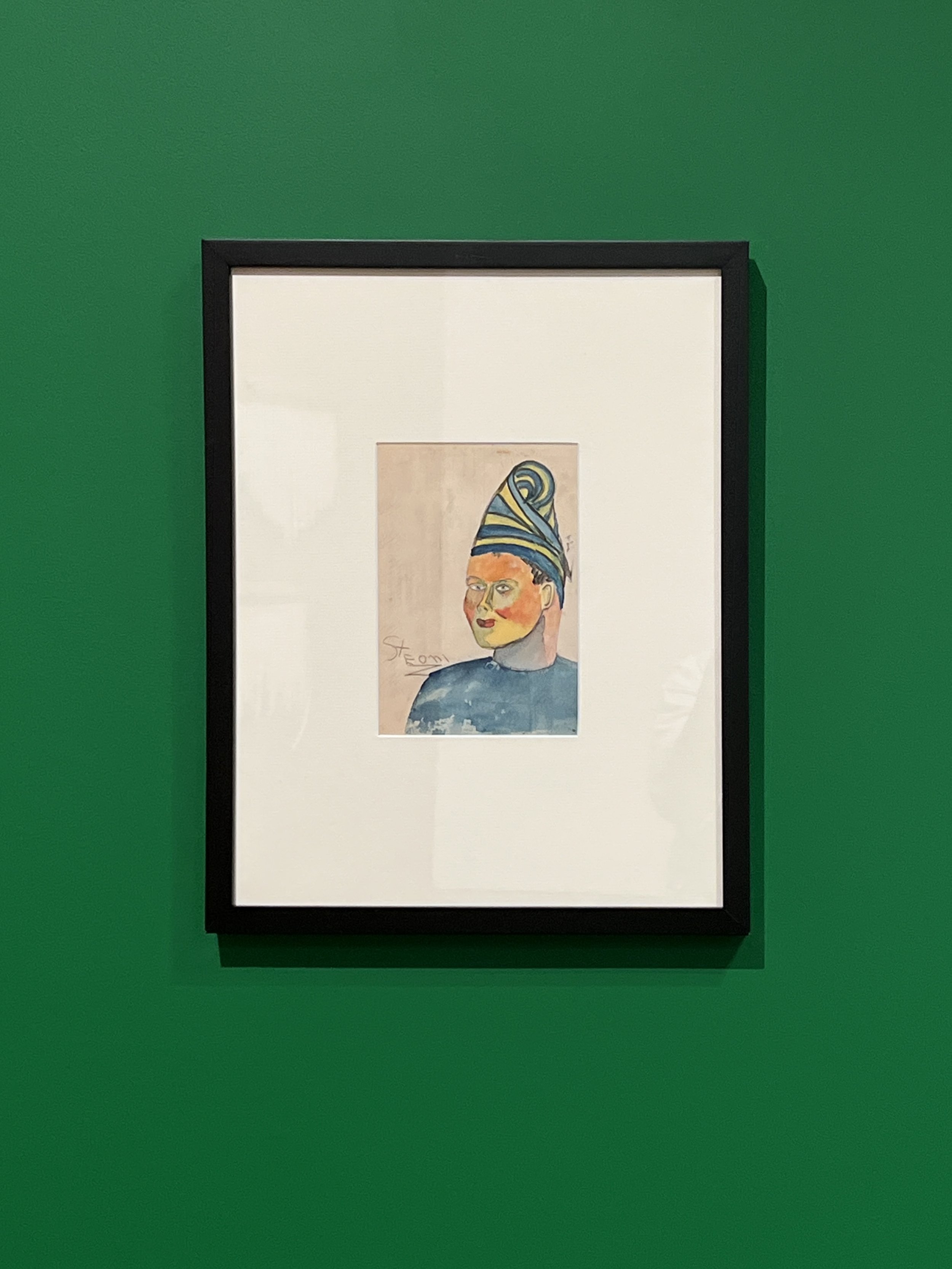
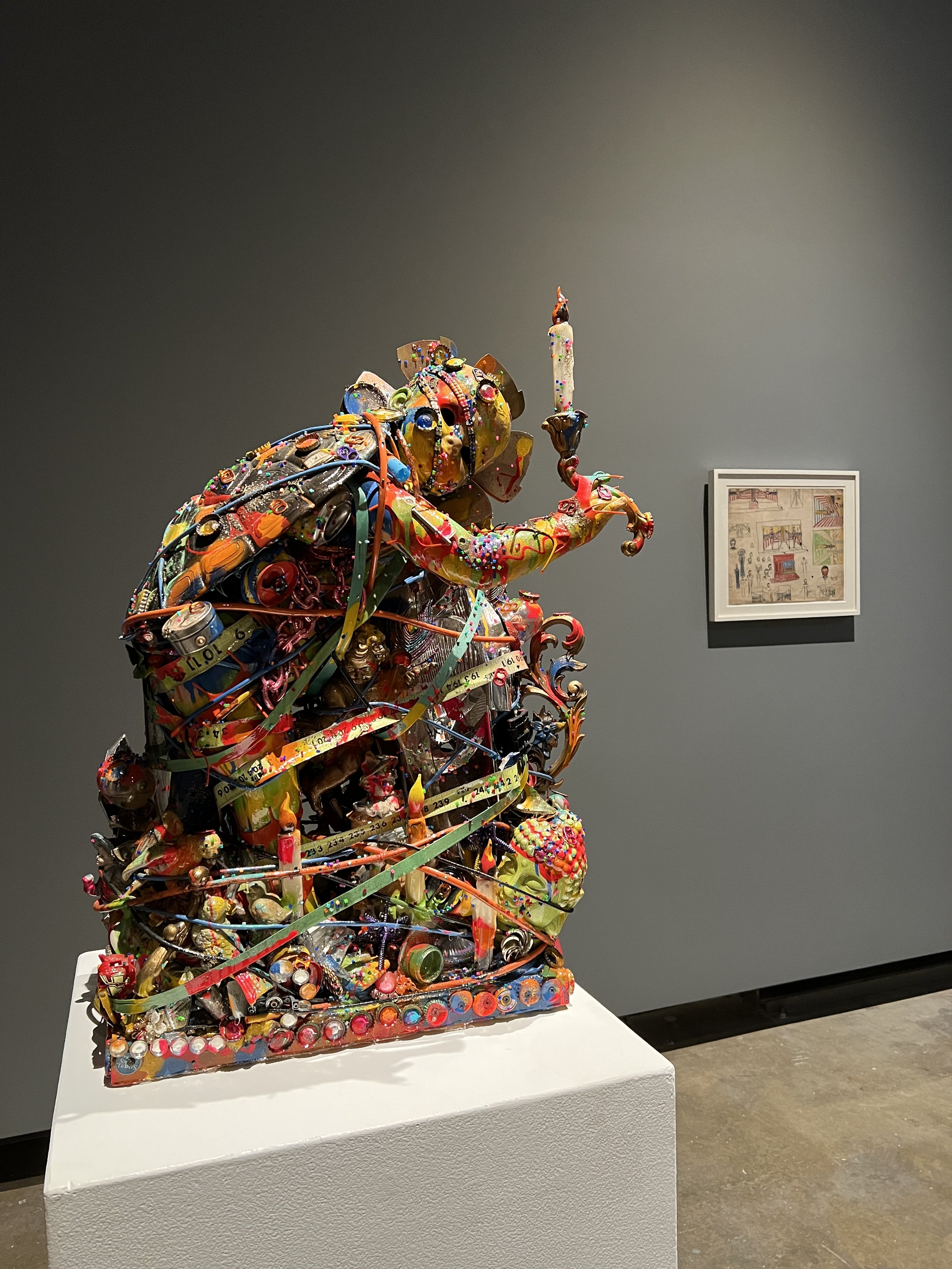
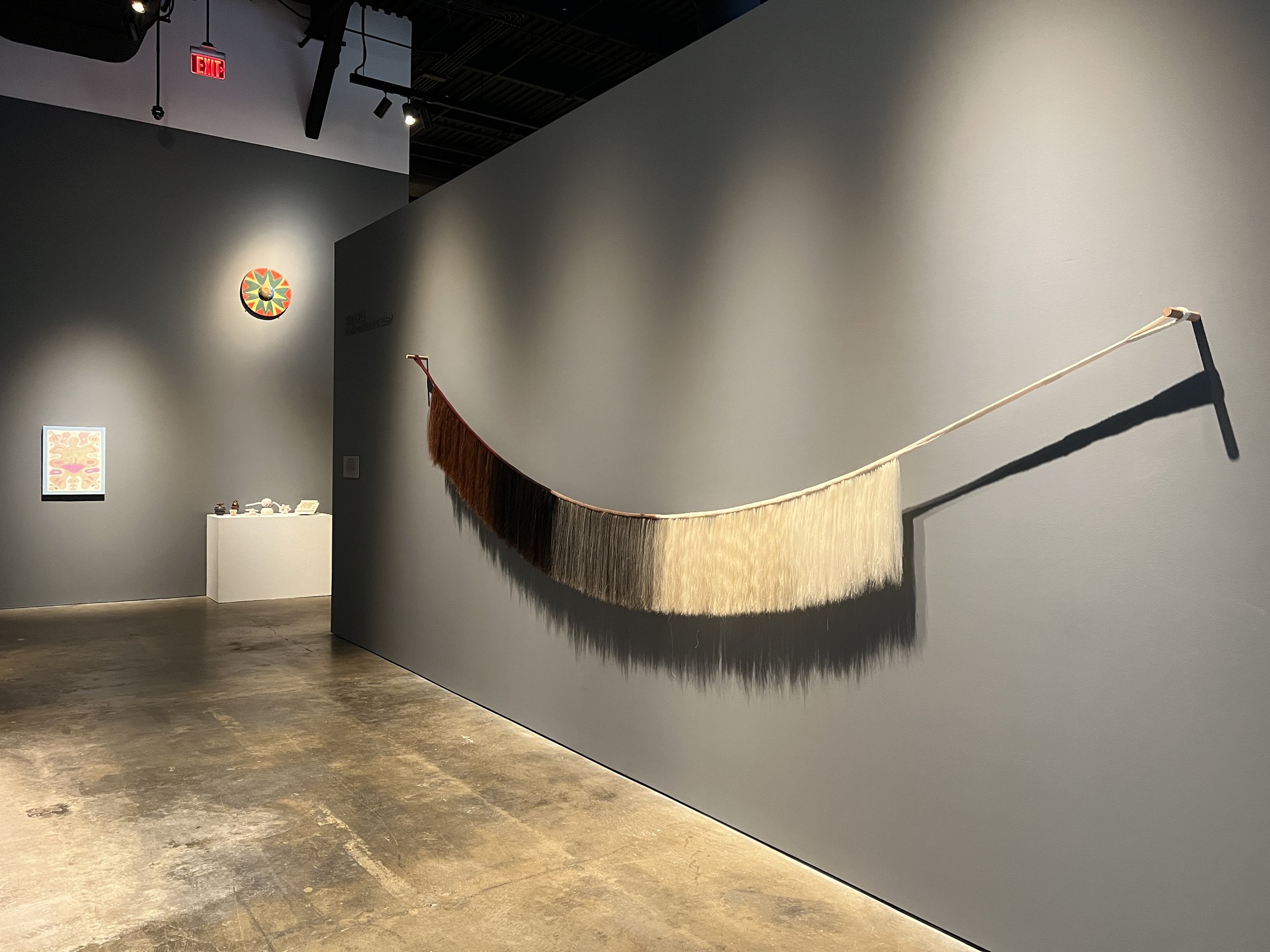
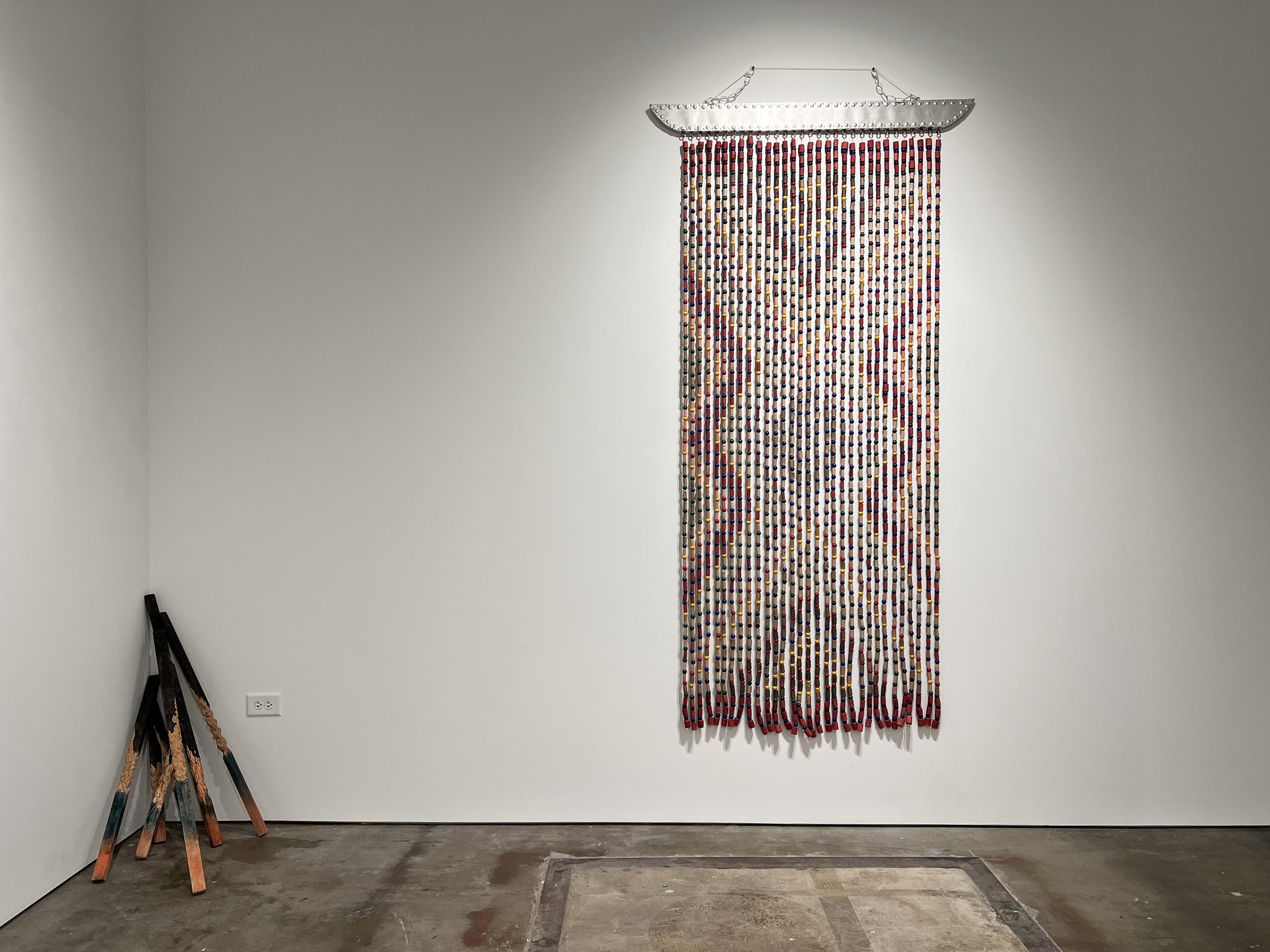



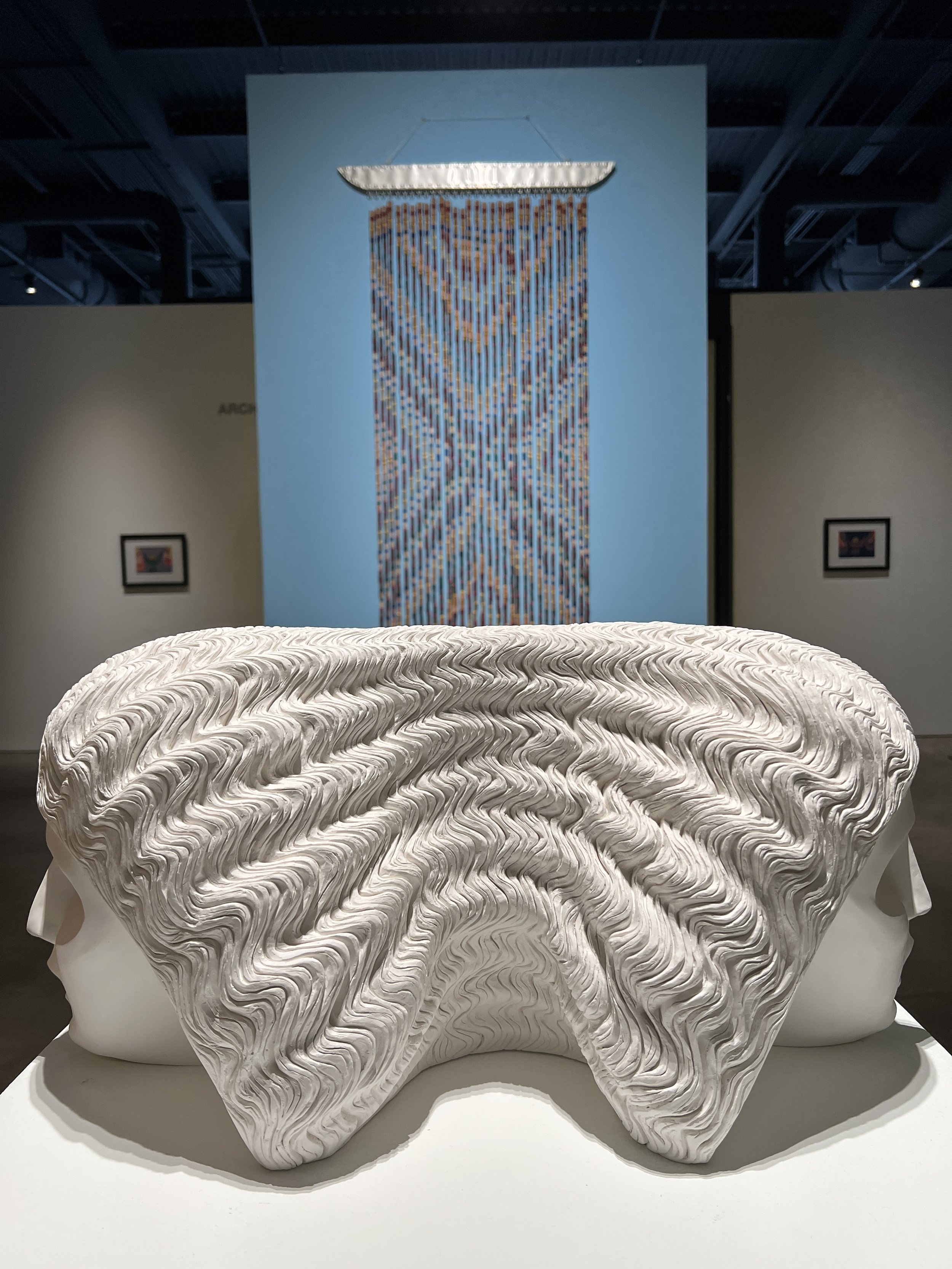
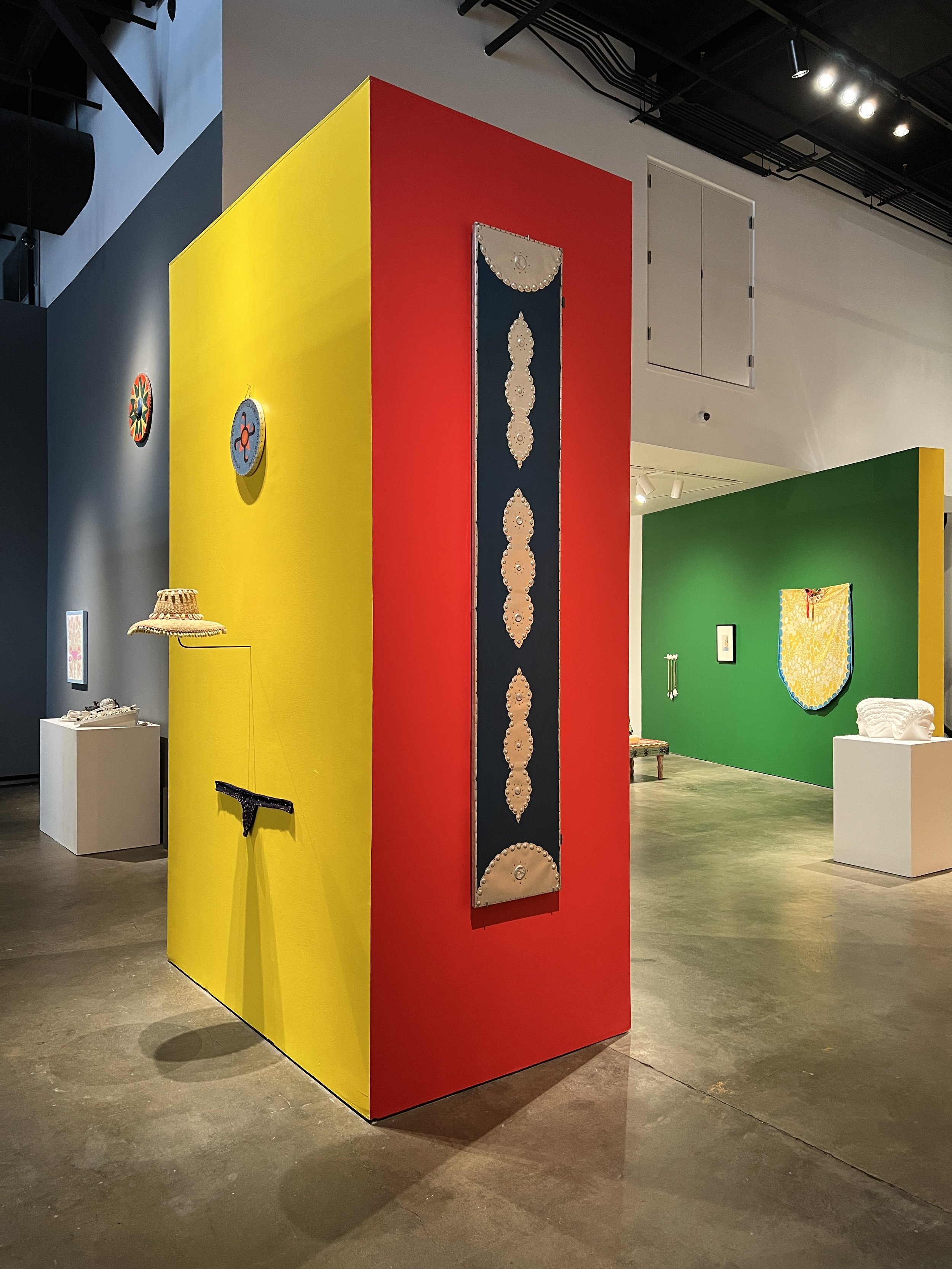
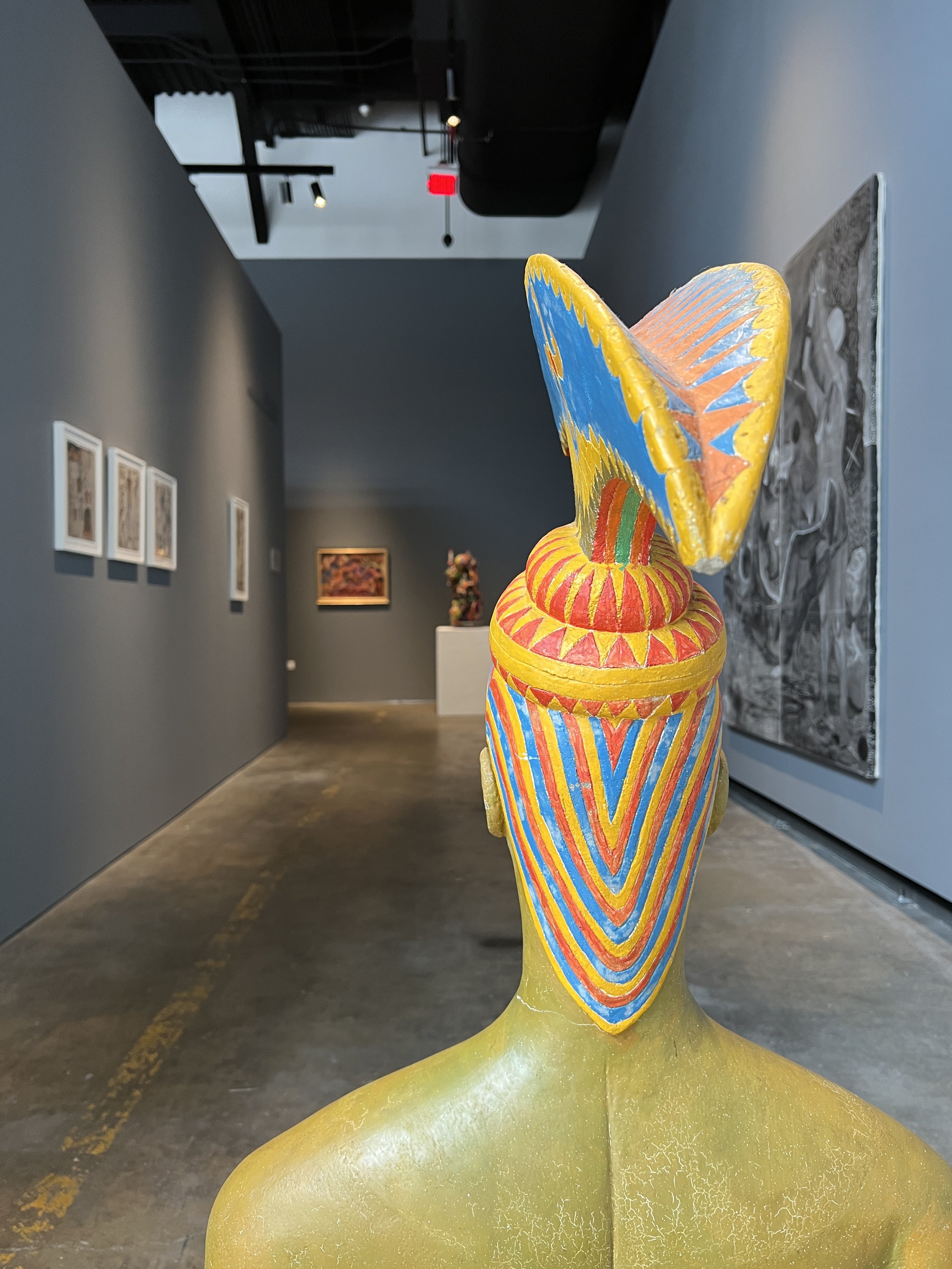
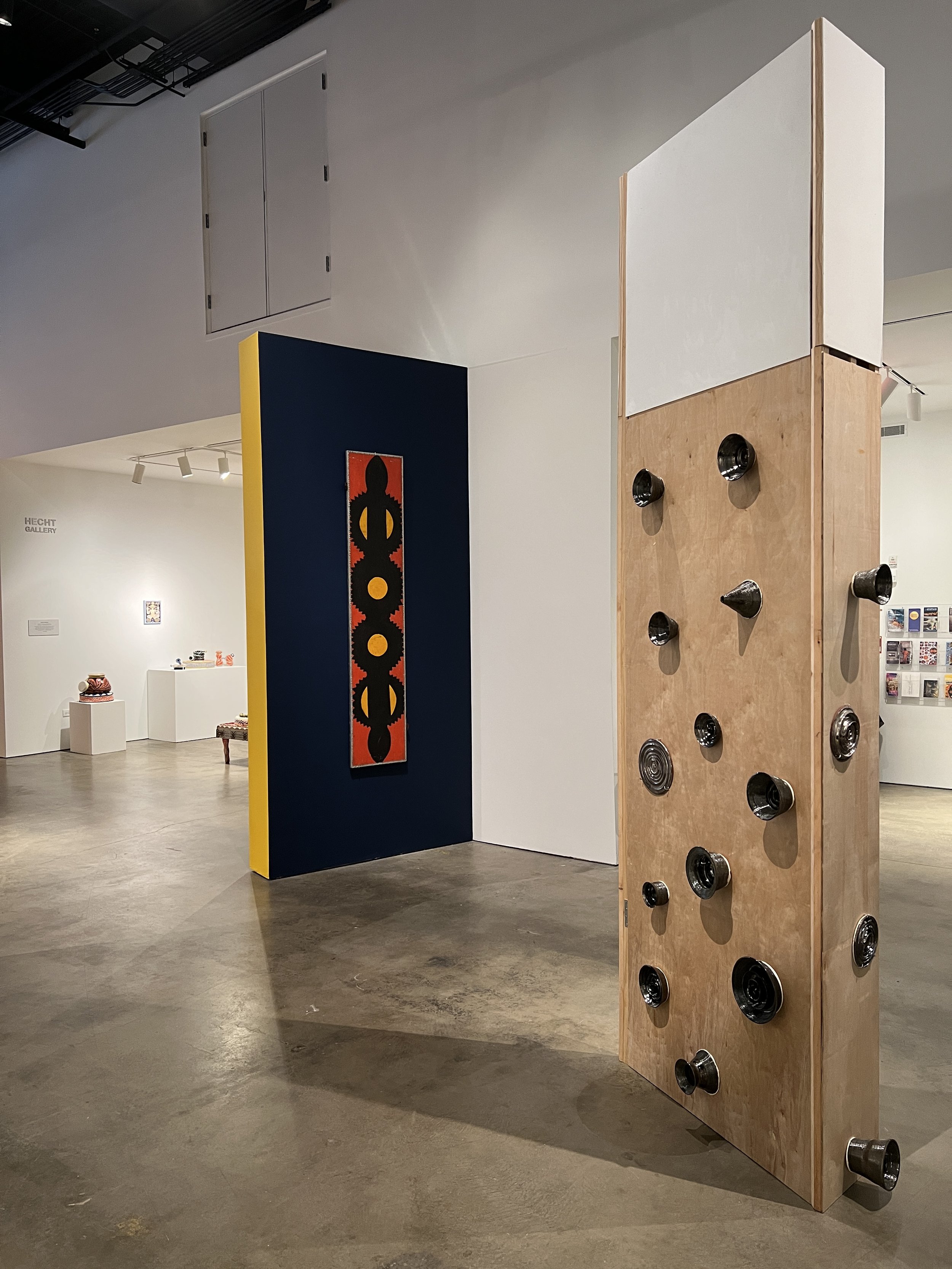
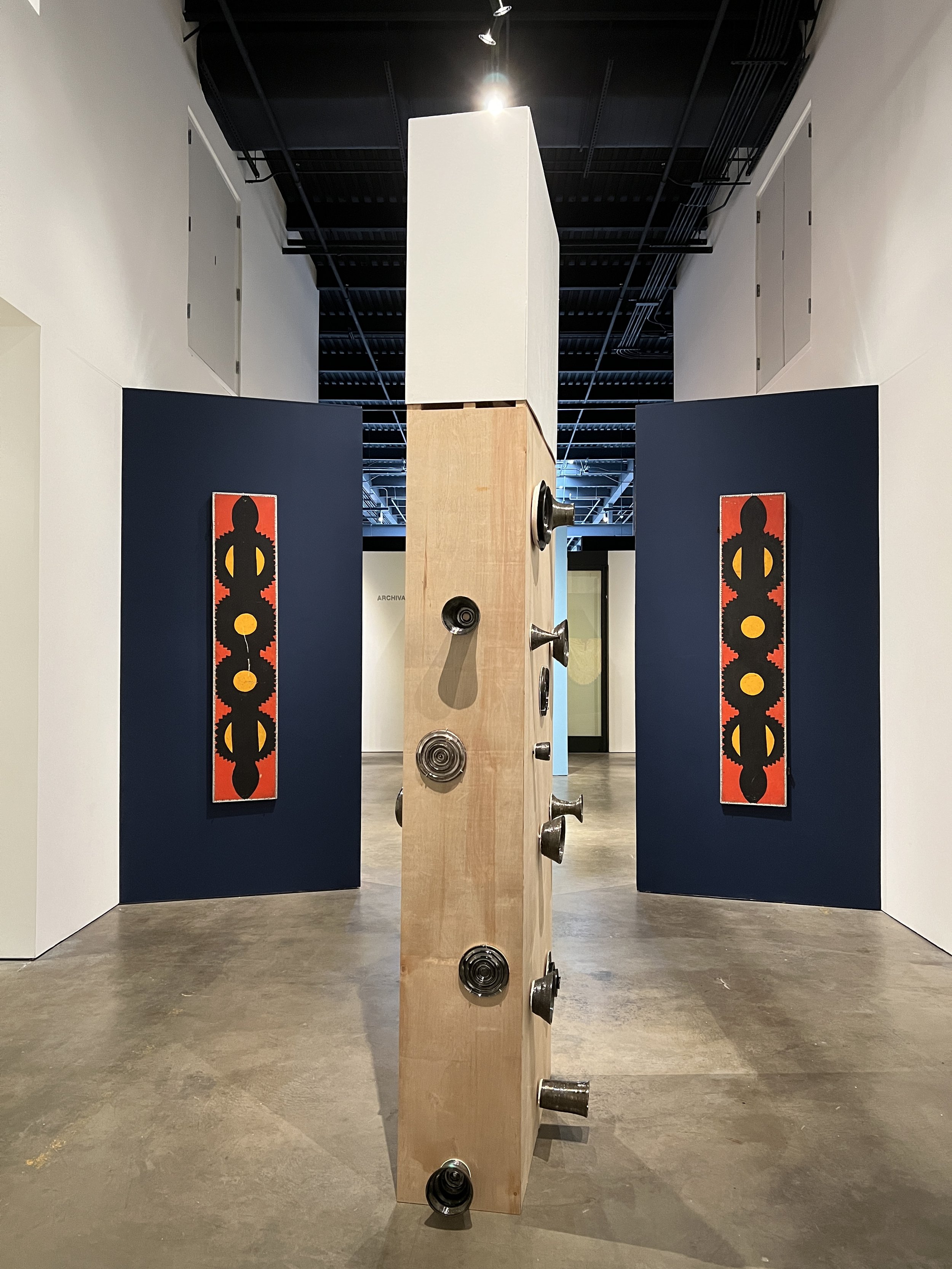
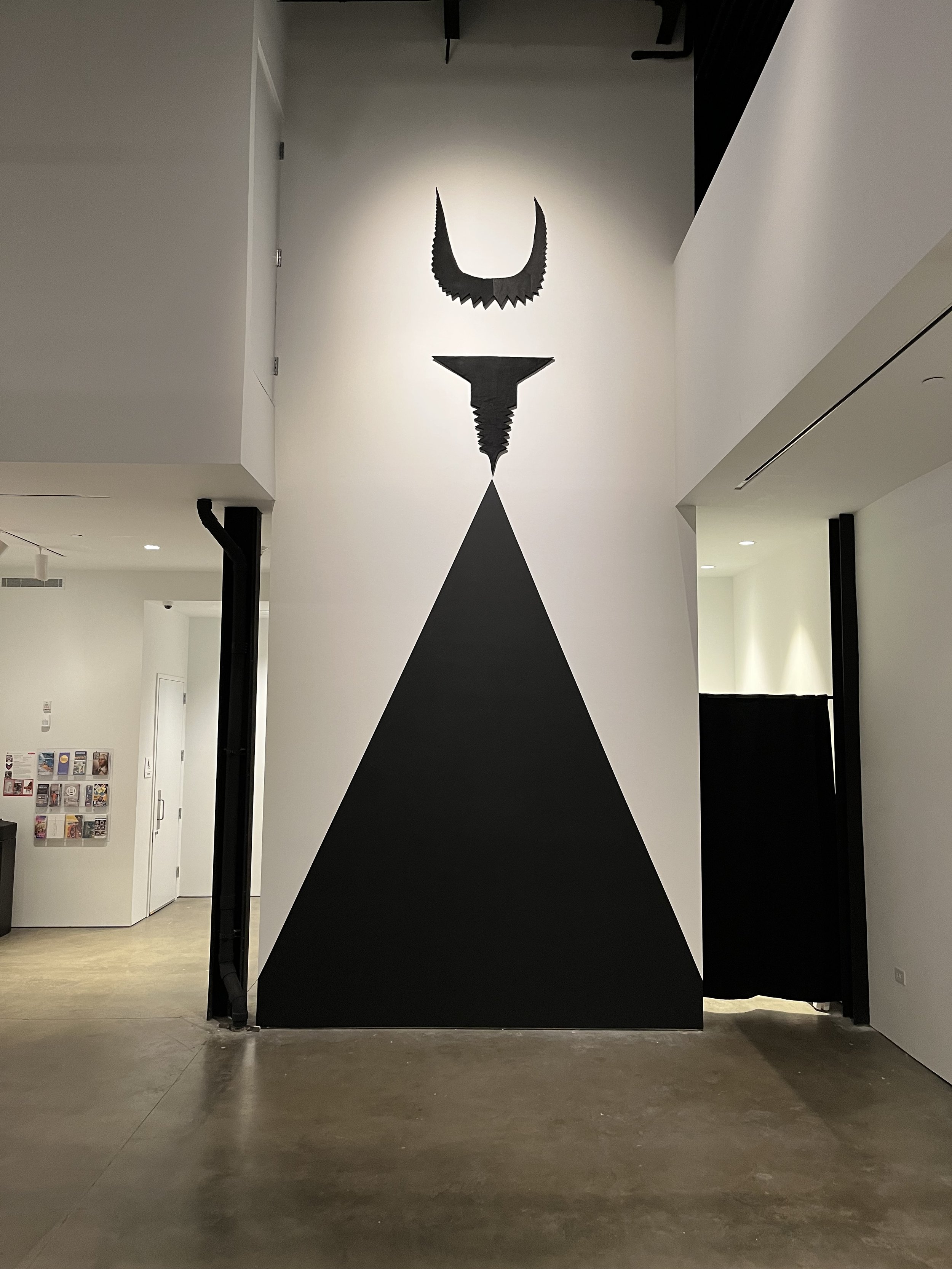
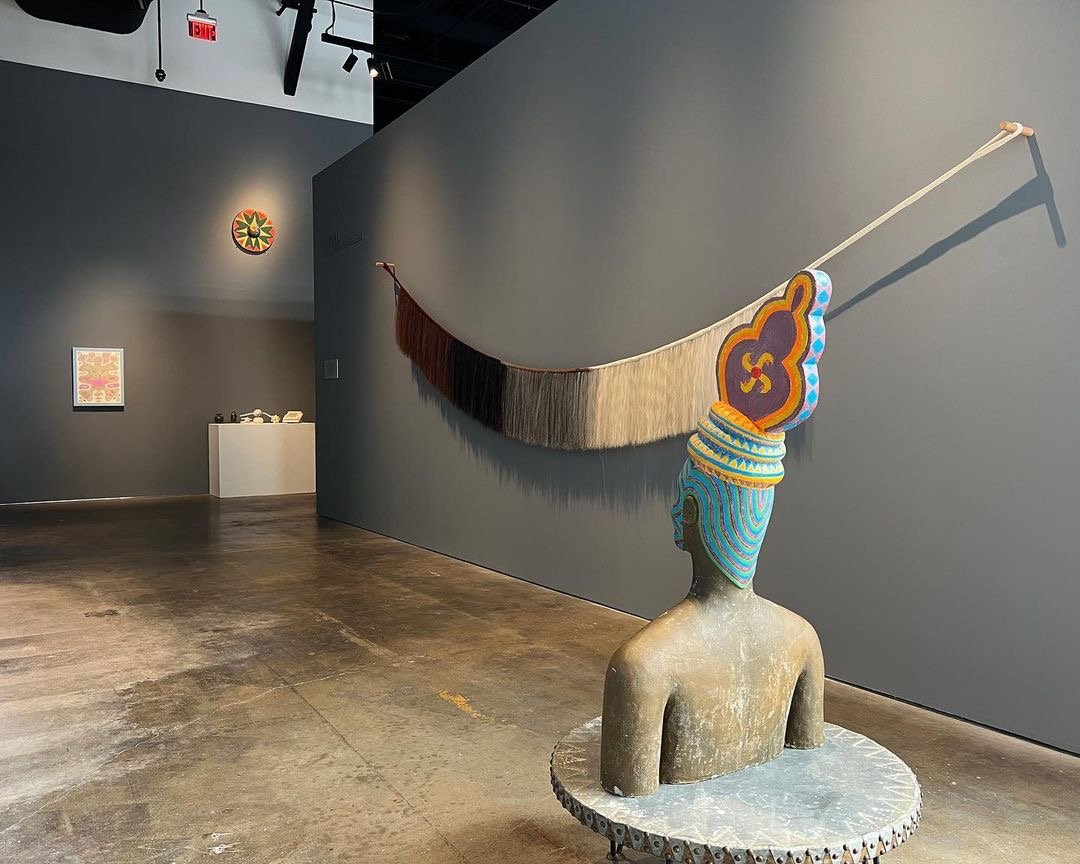
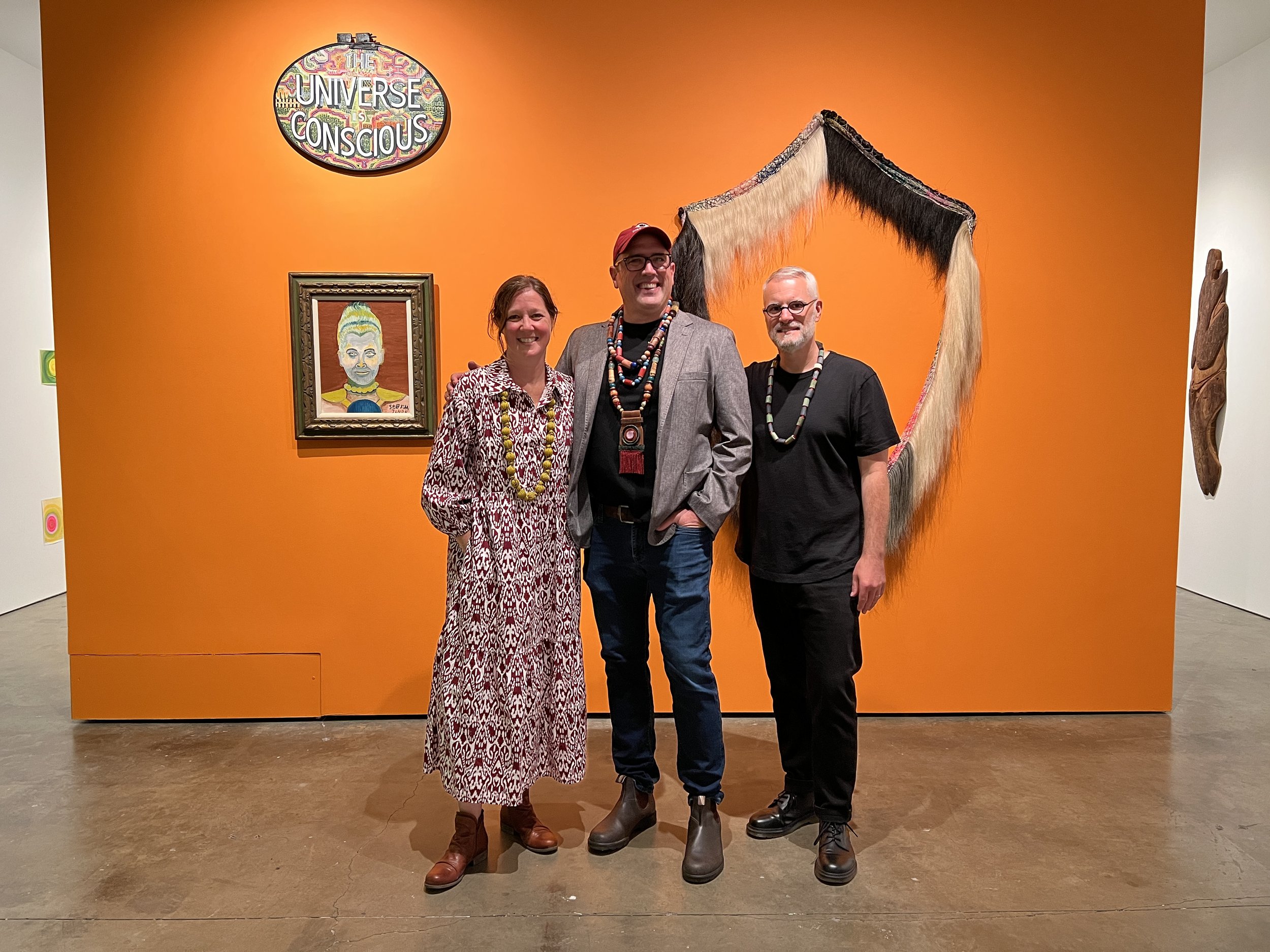
Curatorial Statment:
“The first story I have to tell isn’t exactly true, but it isn’t exactly false either.”1- Lewis Hyde
“I knelt and faced the full moon that was out that night, and I prayed to God to make me different from anyone else in the world. And by God, I think I succeeded in that prayer.”2- Eddie Owens Martin / St. EOM
“If we came from nowhere here why can’t we go somewhere there?”3– Sun Ra
By way of rural Marion County, Georgia, Eddie Owens Martin made his way onto the earthly plane on the 4th of July, 1908. His sharecropper father was abusive and the family was poor. By his own account, Martin always felt “kinda close” to his mother. Keenly observant, perceptive, colorful, sexually extroverted, and active from a very young age, Eddie Owens Martin, like many marginalized individuals, felt as if he did not belong to the people, place, or time into which he had been dubiously received. He could not wait to get out, and at age fourteen, he quit school and hit the road.
Through archival interviews, articles, video footage, and his disarmingly candid first- person account of his life, as told to Tom Patterson, the biographer of Eddie Owens Martin, at least his account of it, is well- established. Suffice it to say, he traveled widely, but spent the majority of his time, until 1957, a million cultural miles away from Marion County, in New York City. There, he subsisted in a variety of ways but primarily as a sex-worker, drug dealer, and, after the life of street hustler began to take its toll, a fortune teller.
In 1935, during one of his occasional trips to Marion County after his father died, Martin fell dangerously ill. In the throes of delirium, he had a vision (fever dream, hallucination, religious conversion?), “...of this great big character sittin’ there like some kinda god, with arms big around as watermelons. He was bigger than a giant, man. He wasn’t on a throne, but he was sittin’ down. His hair went straight up, and his beard was parted in the middle like it was going straight up. And when I saw him I knew I had reached the end of my spiritual journey. And this great big man said to me, ‘If you can go back into the world and follow my spirit, then you can go, but if you can’t follow my spirit then this is the end of the road for you, and you can’t go back.’”4
Upon returning to New York later that same year, Eddie Owens Martin hears another voice while drawing a picture of Ethiopian emperor, Haile Selassie, that says, “You’re gonna be the start of something new, and you’ll call yourself St. EOM, and you’ll be a Pasaquoyan – the first one in the world.”5 Martin would go on to recount to Tom Patterson, “That was before I knew any Spanish, but I found out later that pasa means ‘pass’ in Spanish. And quoyan, I found out, is a oriental word that means ‘bringing’ the past and future together. So you can derive the benefits of the past by bringin’ it into the future. And that’s why I call myself a Pasaquoyan, and this place is called Pasaquan.”6
From this point, Martin dove headlong into his study of ancient cultures (Native American, Mayan, Egyptian, Chinese, and Indian) and mythic civilizations (Atlantis and Mu) to both understand and re-invent himself as St. EOM, to shape his spiritual philosophy, his art—which he obsessively produced—and what it meant to be a Pasaquoyan. In terms of appearance, there was a particular emphasis on the upward cultivation of hair and beard, diet, as well as exotic, often hand-made or altered garments, chromatically charged and ornamented with shells, beads, and other found objects. The Pasaquoyan that Martin envisioned was beholden to nature but was not encumbered by the laws of physics or the gender binary; instead, they were gender fluid and possessed the ability to transcend time and space. Above all, Martin vowed, “to be myself, regardless of the cost, regardless of the ostracism”.7
In addition to the physical and emotional abuse inflicted upon Eddie Owens Martin by his father, he was also openly gay for the better part of his life (though he also recounts many stories of sex with females, usually transactional), and he deeply understood what it meant to be ostracized, but in this case, he seems to have innately understood that the path of the Pasaquoyan would put him completely on the outside and truly answer his childhood prayer to be “different from anyone else in the world.”
St. EOM was indeed ostracized and alienated, his sanity questioned, and early on, there was so little interest in his art that he seems to have simply given up the notion that there might be an audience for it, even though its production never ceased. Admittedly, St. EOM’s ideas and theories can feel disjointed, underdeveloped, and altogether nonsensical, perhaps even to the lone Pasaquoyan, himself. When Tom Patterson asked St. EOM whether he considered himself more painter, sculptor, architect, poet, prophet, or psychic reader, he responded by saying, “Well, honey, to tell the truth, what I really am is a damn good hustler.”8
Our culture tends to think, and level heavy judgement, in a binary fashion, i.e. this/ that, black/white, straight/gay, us/them, and so on. In his ground-breaking book, Trickster Makes the World: Mischief, Myth, and Art, Lewis Hyde, states:
“In short, trickster is a boundary-crosser. Every group has its edge, its sense of in and out, and trickster is always there, at the gates of the city and the gates of life, making sure there is commerce. He also attends the internal boundaries by which groups articulate their social life. We constantly distinguish right and wrong, sacred and profane, clean and dirty, male and female, young and old, living and dead—and in every case will cross the line and confuse the distinction. Trickster is the creative idiot, therefore the wise fool, the gray-haired baby, the cross-dresser, the speaker of sacred profanities. Where someone’s sense of honorable behavior has left him unable to act, trickster will appear to suggest an amoral action, something right/wrong that will get life going again.”9
While we are not suggesting that St. EOM is a trickster god, many of the attributes that Hyde applies to the trickster in this passage are uncannily similar to those inhabited by St. EOM, and, as the author suggests throughout his book, the trickster spirit is almost always embodied in great works of art. It also seems useful here to look beyond the binary, “either/or”, nature of Tom Patterson’s question and put forth an alternative, “yes/and,” proposition: St. EOM is a visionary, and at times a great, painter, sculptor, architect, poet, prophet, psychic reader, and a damn good hustler. He would marshal all of these resources upon returning permanently to Marion County in 1957, where he set about building his magnum opus.
“Pasaquan is the culmination of Eddie Owens Martin’s self-reinvention. It is his reinvention of the world—his little four- acre corner of it, anyway—and it is a genuinely remarkable achievement, one of the great masterworks of American visionary vernacular architecture. But for its creator it served as a sanctuary from an irredeemably violent and corrupt modern world.”10
- Tom Patterson
Nearly thirty years in the making, Pasaquan, complimented by the corpus of paintings, drawings, jewelry, garments, and sculptures that St. EOM produced during his lifetime, is a monumental achievement and it is egregious to saddle it with dismissive labels to like vernacular, self-taught, or outsider. St. EOM’s production, and its synthesis of ancient cultures and civilizations, produced art that is highly original, profound, and moving. It is simply great art and there is nothing like it.
Regardless of what one may think about his philosophies, provocations, and theories, St. EOM was a believer, and his commitment and dedication to the production of his work could simply not have been sustained without deep conviction toward what he saw as his mission, not to mention the research and dedication required to attain the skills to do so.
The diverse group of artists in the exhibition Unstuck in Time: St. EOM, Pasaquan, Here, Now have been assembled, not because their work has a superficial resemblance to that of St. EOM — although in some cases visual resonances do exist — but rather because their work shares a uniqueness of vision, radicality, determination, dedication to craft, and a deep belief that art can not only speak to the human condition in the here-and-now, but that it might in fact be a conduit to help us imagine new worlds and possibilities.
1 Lewis Hyde. Trickster Makes the World: Mischief, Myth and Art (New York, New York, Farrar, Straus and Giroux, 1998). 3
2 Tom Patterson (Narrator), Roger Manley (Photographer), Guy Mendes (Photographer). St. EOM in the Land of Pasaquan: The Life and Times of Eddie Owens Martin (Asheville, North Carolina, Jargon Society, as Jargon 64, Signed Patron Edition, 1987). 113
3 Le Sony’r Ra, A.K.A Sun Ra (Composer, Bandleader, Keyboards). Imagination- track 2, recorded 1966, on Nothing Is.... ESP-Disk. 1970. LP record.
4 Patterson, et.al. St. EOM in the Land of Pasaquan: The Life and Times of Eddie Owens Martin, 167
5 Ibid., 168-9
6 Ibid., 169
7 Ibid., 167
8 Ibid., 258
9 Hyde. Trickster Makes the World: Mischief, Myth and Art. 7
10 Patterson, et.al. St. EOM in the Land of Pasaquan: The Life and Times of Eddie Owens Martin. 259

